




Kehoe orders $15 million for food assistance
By Alvin A. Reid
on Aging to ensure seniors continue receiving meals, and authorized an early $5 million distribution from Temporary Assistance for Needy Families funds to support food banks across the state. He said the state is working to “expe-

By Ashley Winters St. Louis American
newly formed nonprofit is working to restore Fairground Park, once called the crown jewel of north St. Louis. Its mission is to repair years of neglect, reconnect the park with its history and build a stronger, more inclusive future. For a community battered by poverty, crime, disinvestment — and most recently a devastating tornado — the park represents both a painful past and a chance at renewal.
Mary Wheeler-Jones, co-founder of Fairground Park for All and a lifelong resident of the surrounding community, says the organization’s mission is about more than fixing up a park, it’s about unity.
“It’s time for us to stop looking at St. Louis in pieces — northside, southside,” she said. “This is a regional park, and
See PARK, A12

dite additional funding sources” to help at-risk residents but cannot fully replace the halted federal Supplemental Nutrition Assistance Program (SNAP) benefits. With Congress deadlocked over a stopgap spending bill, the U.S. Department of Agriculture has warned that funding
By Sylvester Brown Jr. St. Louis American
Washington University faculty and student groups already were voicing strong opposition to a Trump administration proposal linking federal funding to diversity limits when the university confirmed it would reject the plan — a move that has fueled broader debate about political influence in higher education.
The proposal unveiled Oct. 1, would condition access to federal research funding on universities’ agreement to scale back diversity, equity and inclusion initiatives, restrict international student enrollment, freeze tuition for five years and define gender based on “biological


By Ashley Winters St. Louis American
New gathering spaces, greenway connections and small business incubators are coming to several St. Louis neighborhoods, fueled by $1.14 million in city grants supporting community-led plans. The Neighborhood Plan Implementation Awards, announced Wednesday by the city’s Community Development Administration (CDA), will support projects in Skinker DeBaliviere, the West End, Downtown, Downtown West, Covenant Blu-Grand Center, JeffVander-Lou and St. Louis Place.
Funded through the city’s Economic Development Sales Tax, the initiative helps neighborhoods move from planning
A13
By Janice Ellis
We are witnessing what is tantamount to a creeping breakdown and dissolution of our political process at the state and national level — laws disregarded, people’s rights dismissed and operational norms ignored on multiple fronts. What is the endgame? What are the real goals behind the suppression and gutting of the processes that have been the bedrock of the democratic process in America?
Endgame is not just a short or longterm effect or result. It means the final, decisive stage of any strategic activity. What do you think the final result will be of some of the disturbing and questionably illegal actions occurring in the halls of government in our state and nation?
In Missouri, what is the endgame of a governor who follows the dictates of a national Republican agenda when it comes to denying abortion care, signing a redistricting map whose origin is in question and making direct participation in the democratic process more difficult, if not impossible — all of which are contrary and diametrically opposed to the will of the majority of Missourians?
What is the endgame?
When all is said and done, what life might be like for Missourians cannot be minimized.
ing access to markets to sell their produce, running the risk of losing farms that have been in families for generations. Or when it comes to being able to deal with the rising costs of groceries and other consumer goods.
Are these current conditions temporary or do they represent the quality of life to come?
On the national level, what is the endgame when our branches of government — executive, legislative and judicial — repeatedly disregard their role and responsibilities, then abuse, capitulate or totally forfeit their constitutional powers when it comes to executing and protecting the integrity of our democracy?
Will the disregard for the rule of law be a short-term occurrence with this administration or will it become the norm of future administrations?

Typically, we see damaging legislation, policies and budget cuts as cyclical and find some measure of comfort. We believe and hope that changes will occur in the next election cycle and things could get better with a new incoming administration.
Given the political climate we are in, with the rapid and extreme changes taking place at the state and national level, there is a greater chance that recovery might be extremely difficult, or worse, might never occur.
Our state and Congressional representatives willingly give tacit and overt approval of what appears to be arbitrary policy changes, budget cuts, new tariffs and other measures that hurt many Missourians. Will the effects be shortterm or lasting?
That’s especially true when it comes to the cuts in Medicaid, which will deny many Missourians needed health care and other services as well as result in the closure of rural hospitals and community health centers, eliminating access to critically needed medical treatment.
Or when it comes to farmers not hav-
Paying close attention to what is occurring in the legislative halls and the streets in cities and states across America should compel us all to ask: what is the endgame?
When we are constantly bombarded with lies, distortions, divisive name-calling, hate speech coming from the very political leaders who should be promoting collaboration and finding solutions — is this just temporary?
Or will it result in a total collapse of our political values, traditions, civic culture and civility itself?
Just as important: what is our game plan to make sure all the disregard for the democratic principles and laws that define America is short-term and short-lived?
Teams that survive and ultimately win do not leave their game plan up to chance. They do not just sit idly by, watch and hope that the opposing team gives up their fight and loses the game. They become intimately familiar with the tactics and plays of the opposing team. Teams that win also have an offensive and defensive game plan and strategies to counter the opposing team that they commit to and consistently employ.
For those of us who do not like the game we are in and the possible longterm results, we need to determine our own desired endgame.
What will it be?
What team will you be on?
Standing on the sidelines is not a winning option.
Janice Ellis is a columnist for The Missouri Independent.




By Marc Morial
“This act flows from a clear and simple wrong. Its only purpose is to right that wrong. Millions of Americans are denied the right to vote because of their color. This law will ensure them the right to vote. The wrong is one which no American, in his heart, can justify. The right is one which no American, true to our principles, can deny.” — President Lyndon B. Johnson, signed the Voting Rights Act of 1964
The Supreme Court holds the future of America in its hands this week. It gets to decide whether this is a nation that serves a great many or only the voices of a select few. It is going to determine if we are charting a path toward fulfilling our promise of liberty, justice and the pursuit of happiness for all or backsliding to a dark past where a racial caste system denied the right to vote to millions of Americans based on the color of their skin.
That is what is at the heart of Louisiana v. Callais, a case that will decide the legality of a congressional map that adequately reflects the population of the same state where the very same court declared segregation legal just over a century ago in Plessy v. Ferguson.
In Louisiana v. Callais, a group of “non-African-American” voters is decrying that a newly created district in 2024 that allotted for two majority African American congressional districts, two of six, which directly reflects the state’s Black population, discriminates against them.
Civil rights groups argue that the new district is lawful under Section 2 of the Voting Rights Act of 1964 (VRA). For those unfamiliar with Section 2, it allows for legal action against state entities, including states, counties and municipalities, on the following factors:
● The history of official voting-related discrimination in the state or political subdivision;
● The extent to which voting in the elections of the state or political subdivision is racially polarized.
● The extent to which the state or political subdivision has used voting prac-
By David Marshall
tices or procedures that tend to enhance the opportunity for discrimination against the minority group, such as extensive election districts, majority-vote requirements and prohibitions against ballot voting.
● The exclusion of members of the minority group from candidate slating processes;
● The extent to which minority group members bear the effects of discrimination in areas such as education, employment and health, hindering their ability to participate effectively in the political process.
● The use of overt or subtle racial appeals in political campaigns; and

● The extent to which members of the minority group have been elected to public office in the jurisdiction.
Let’s look at the history of Louisiana, a state that allowed generations of poll taxes, literacy tests, race-based terror and again, Plessy v. Ferguson, to mar its past; the state has a history of voting discrimination.
It is also clear that favoring a congressional map that concentrates political power in a party that has demonstrated that the needs of working-class and poor Louisianans, who are disproportionately Black, don’t matter is also a violation. And make no mistake, striking down Section 2 won’t stop at disenfranchisement in Louisiana. In the last two months, North Carolina, Missouri and Texas have been directed to redraw their state maps to increase Republican seats in the House of Representatives.
If this is a nation where every American should have the right to freedom and to have a voice in the future of this country, then we must call out when the highest court in the land chooses to silence large swaths of us based on the color of our skin and our beliefs.
This is an attack on Black voting power, an attack on Black America and an attack on the future of American democracy.
Marc Morial is president and CEO of the National Urban League.
The Trump administration is ordering the removal of information on slavery at multiple national parks in an effort to scrub them of “corrosive ideology.” To describe the truth about our Black experience and history as “corrosive ideology” is not only an insult but highlights the possible long-term damage that this administration can cause.
Some of the damage may be permanent and beyond repair. Our ancestors, through their sacrifices and fight for human dignity, placed a tremendous amount of trust in future generations.
They trusted that the next generations represented by today’s Generation Z, Millennials, Generation X and Baby Boomers would continue the fight and protect what was gained.
There comes a time in every movement when the torch must pass. The fight to preserve the story of the Black experience while defending human dignity can no longer rest solely in the hands of the old guard.
understands the issues, who fights and who can stand up and speak up for us in this moment and in this time,” Pearson told The Hill in an interview.
The 30-year-old Pearson is among a growing number of younger Democrats challenging older and established incumbents in the U.S. House. Calls for generational change and making way for new younger voices within the Democratic Party have increased.
In Maine, first-time candidate Graham Platner, 40, faces 77-year-old Gov. Janet Mills. In Massachusetts, Rep. Seth Moulton, 46, is seeking to oust Sen. Ed Markey, who is 79. In the nation’s capital, 88-year-old Eleanor Holmes Norton will face at least two younger foes if she runs for reelection.
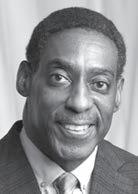
In California, state Sen. Scott Wiener, 55, and former aide to Rep. Alexandria OcasioCortez, is geared up to challenge 85-year-old former House Speaker Nancy Pelosi for her San Francisco district seat. The issue is not one of lack of respect for elders.
To preserve the essence of the Black experience in a rapidly changing nation, people of color must begin electing young leaders like Tennessee state Rep. Justin Pearson who has the fire and passion to challenge the MAGA movement on all fronts. Pearson, along with fellow Rep. Justin Jones, were members of the “Tennessee Three” who were expelled from their state House seats and later reinstated by local officials.
The young Black lawmakers were removed in 2023 for protesting on the House floor about gun control in the wake of a deadly school shooting in Nashville. Their protest on the House floor showed the type of bold and sometimes radical leadership needed to confront what is clearly becoming authoritarian rule in our nation.
Now Justin Pearson wants to go to Washington. He has announced that he is challenging the 76-year-old incumbent Rep. Steve Cohen for his Memphis-based seat in the House next year. “I believe we have a leader who is proximate, who
The issue is one of political strategy and the survival of the idea of fairness and justice for all. Baby Boomers, those between the ages of 61 to 79, are no longer the largest generation. Millennials (age 29 to 44) have taken over that title.
The next largest generation is Gen Z (age 13 to 28). Gen Z are the digital natives, the first generation in this digital age who have never had life without the internet.
Rep. Justin Pearson, when referring to his challenge against the incumbent, said he was “not going to make our campaign about age,” saying he’s voted for lawmakers much older than Cohen. But he argued the incumbent was not meeting the moment now. Cohen is not alone in that assessment.
David W. Marshall is
“It

Missouri federal prosecutor joins case against New York attorney general
By Nia Hightower
For The St. Louis American
Just days after New York Attorney General
Letitia James moved to remove President Donald Trump’s ex-lawyer from leading her criminal case, a St. Louis-based Trump supporter joined the team prosecuting her.
Lindsey Halligan, interim U.S. attorney for the Eastern District of Virginia and a former attorney for the president, personally secured the indictment against James and continues to lead the case. Assistant U.S. Attorney Roger Keller, a veteran prosecutor from the Eastern District of Missouri, has joined the Virginia case.
Keller, a St. Charles County resident who works out of the St. Louis office, was described by a former colleague as “outspokenly conservative, an outspoken supporter of Donald Trump” known to wear the trademark red MAGA hat outside of work, St. Louis Magazine reported.
According to Lawfare, Keller had a few awkward moments in court — first telling the judge the trial might last two weeks before being corrected that it would likely take three to five days. Later, he puzzled the courtroom by suggesting that James should keep a “log” of her public statements similar to the government’s media disclosure record. James pleaded not guilty last week to federal charges of mortgage fraud and making false statements to a financial institution. The Justice Department alleges that she lied about buying a Virginia house in 2020 as a second residence but instead used it as a “rental investment property” for a family of three. Her great-niece has lived in the home since 2020 and testified to a Norfolk grand jury that she does not pay rent, The New York Times reported. Tax forms show a total of $1,350 in rent from the property for the year, according to The Times.
“This is not about me,”

ments on that motion in November.
Trump campaigned ahead of the 2024 election pledging revenge against his political opponents.
James and her allies have called the case a “vehicle of retribution” by his administration.
Higher Heights, a national organization that supports Black women in public office, said James was being targeted for doing the job she was elected to do.
“She held Trump accountable in court and proved that no one, no matter how powerful, is above the law,” the group said.
National Security Adviser John Bolton, charged with retaining national defense information. All three deny wrongdoing. In 2022, James brought a civil fraud case against Trump and the Trump Organization that found him guilty of falsifying records to secure favorable loans. The ruling led to a $500 million fine later overturned on appeal as excessive, though the guilty verdict stood.
James said after thanking supporters gathered outside the federal building in Virginia. “This is about all of us and a justice system that has been weaponized. A justice system that has been used as a tool of revenge. A weapon against those individuals who simply did their job and stood up for the rule of law.”
Halligan’s role is under
fire from James’ defense team, which is seeking to dismiss the indictment. They argue her appointment violated federal law and allege she communicated with a reporter about the case using the auto-delete feature on the Signal app — a potential violation of court rules and record-keeping laws. A judge will hear argu-
New York Gov. Kathy Hochul voiced similar support on Threads the night before the arraignment. “[Trump] came to our city, and now he is destroying our system of justice to take her down, but that will not happen, my friends, because she is, above all, a New Yorker,” Hochul wrote. “She has the heart of a lioness. She is tough and she will withstand.”
James is among three high-profile critics of Trump the Justice Department recently charged — joining former FBI Director James Comey, accused of lying to Congress, and former
Polls show the public is divided. A Quinnipiac University survey released Oct. 22 found that 52 percent of voters believe Trump is using the Justice Department to pursue unjustified criminal charges against his political opponents, while 38 percent believe the charges are legally justified.
A similar Reuters/Ipsos poll found more than half of Americans — including three in 10 Republicans — think the president is using federal law enforcement to target his “enemies.” The trial is set for Jan. 26. As supporters cheered outside the courthouse, James said she would not be distracted from her duties as New York’s top prosecutor.
“There’s no fear today,” she said.


Here in St Louis, e S tion r s een oin t e ost good for over 140 years You can give with joy and help thousands of St Louisans in need this Christmas e uests for assistance have increased due to economic challenges and the devastating tornadoes that impacted our region this summer. Volunteering for just two hours at our iconic red kettles can help raise enough money to feed a family of four for a week, or provide two nights of safe shelter
Here in St Louis, he Salvation rmy has een doing the most for over 140 years ou can give with oy and help of Louisans need this hristmas e uests for assistance have increased due to economic challenges and devastating tornadoes that impacted our region this summer olunteering for ust two hours at our iconic red kettles can help raise enough money to feed a family of four for a week, or provide two nights of safe shelter


Olympians Jackie JoynerKersee and André Lamar Phillips at the 25th anniversary celebration of the JJK Center during the Sequins, Suits & Sneakers gala last week. JoynerKersee’s brother and Olympian Al Joyner stands in the second row.

By James T. Ingram
For the St. Louis American
Olympic legend Jackie Joyner-Kersee marked 25 years of serving East St. Louis youth during a gala at the Four Seasons Hotel in downtown St. Louis.
More than 450 guests attended the Friday event, which highlighted the foundation’s growth from the opening of the Jackie Joyner-Kersee Center in 2000 to the ongoing expansion of the JJK Campus — a hub for youth development, health and education initiatives.
Former KSDK anchor Rene Knott emceed the evening, which featured a “Fireside Chat” between Joyner-Kersee and world heptathlon champion Anna Hall. Hall called the Olympic icon a mentor and described the moment as a “passing of the baton” between generations of athletes.
The event raised major support for the foundation’s next phase. A commis-
sioned painting by Haitian American artist Guy Stanley Philoche sold for $50,000, and Ameren Illinois announced a $1 million donation toward the new Food, Agriculture, Nutrition and Innovation (FAN) Center now under construction on the JJK Campus.
JJK cheerleaders greeted guests, a student step team performed and several youth offered prayers and reflections about the foundation’s impact.
A tribute video traced Joyner-Kersee’s journey from Olympic champion to community leader, highlighting alumni who now bring their own children to JJK programs.
Widely regarded as the greatest female athlete of all time, Joyner-Kersee said her mission has always been to help young people succeed beyond sports.
“There’s gold in all of us,” read the message in gold icing on each dessert plate — a fitting symbol of her enduring legacy.
By Julianne Malveaux
We don’t hate America. We built America. Brick by brick, cotton bale by cotton bale, invention by invention, we shaped this nation while it denied our humanity. Our ancestors sowed its fields, cleaned its houses, fought its wars and fueled its economy.
If we hated America, we would have left long ago — or let it collapse under the weight of its own hypocrisy. But love and hate are not opposites here. The opposite of hate is trust, and trust is something America has never truly earned from Black folks.
Every generation of Black people has been asked to prove our patriotism. We’ve marched, bled and died for freedoms we were rarely allowed to enjoy.
From Crispus Attucks to the Tuskegee Airmen, our loyalty has been tested, questioned and betrayed. The nation that celebrates “liberty and justice for all” has always added an invisible asterisk next to “for all.”
tired of being sick and tired,” they called her divisive. When today’s marchers chant “No Kings,” they’re labeled enemies of democracy — when, in fact, they’re its last defenders. Our mistrust of America isn’t born of cynicism; it’s born of experience. From redlining to racial profiling, from voter suppression to environmental racism, this nation has given us every reason to be wary. Trust is not a constitutional guarantee — it’s a social contract. And America has broken that contract repeatedly.

So, no — we don’t hate America. But we’ve learned to be cautious with a country that too often confuses our survival with its generosity.
Consider the recent No Kings rallies. Millions — Black, brown, white, young and old — marched to reject creeping authoritarianism. The name said it plainly: No Kings. No man above the law. Yet critics dismissed the protests as “un-American,” “radical,” even “Marxist.” The Speaker of the House called demonstrators a “hate-America mob.”
That’s rich. What could be more American than dissent? What could be more patriotic than demanding that power answer to the people?
When Black people raise our voices, our love for this nation is called hatred. When Colin Kaepernick knelt to protest police violence, they said he disrespected the flag. When Fannie Lou Hamer said she was “sick and
Economically, the ledger is staggering. White wealth in the United States is roughly six to seven times that of Black wealth — a gap created by stolen labor, discriminatory lending and a tax code tilted toward the comfortable. Black women, the backbone of this economy, still earn barely 64 cents for every dollar paid to white men.
Politically, our votes are courted but our needs are often ignored. Every election season brings promises, yet when it’s time for legislation — on housing, healthcare, childcare or reparations — the urgency fades. We don’t hate America for that inconsistency; we simply refuse to be naïve about it.
The truest patriots are those willing to critique their country because they believe it can live up to its promise. Black people have always done that work.
Let’s be clear: We don’t hate America, and we resent the accusation. We are the conscience of America.
We march to keep it honest, not tear it down. We protest because protest is the path to transformation. We march because we understand that freedom is not free. Protest is the price we pay for a better society.
Dr. Julianne Malveaux is a Washington, D.C.-based economist and author.


By Sylvester Brown Jr. St. Louis American
fter years of collaboration, ArchCity Defenders and Action St. Louis have partnered to open a new facility in north St. Louis that will house legal, social and advocacy services under one roof.
The new Northside Movement Center, a renovated property on Goodfellow Boulevard in the North Pointe neighborhood, will serve as a central hub for residents who have long faced disinvestment and limited access to legal or social support. The center will officially open in January and employ about 65 people between the two organizations.
ArchCity Defenders, a nonprofit civil rights law firm, and Action St. Louis, a grassroots advocacy group, bought and redeveloped the former New North Side Family Life Center building. Leaders describe it


as a major investment in the city’s north side and a commitment to building sustainable community infrastructure.
“The people we’ve represented in courts and through these campaigns are mostly located in St. Louis city and county,” said Z Gorley, ArchCity Defenders’ communications director. “So our idea is to centralize the array of services we provide under one roof. Clients will be able to meet with their attorneys, paralegals and social workers who help folk find housing and make sure they have food in the fridge, and Action will have their own suite of offices as well with a core staff in the building to meet the community’s needs.”
The two organizations have spent nearly a decade working together on campaigns aimed at reshaping local housing, criminal justice and economic systems.
Social Security reforms may hit Black and low-income retirees hardest
By Stacy M. Brown Washington Informer
Some of the Trump administration’s new reforms affect the working class, women, minorities and seniors.
Major changes to Social Security taking effect this fall and into 2026 could reshape the nation’s retirement safety net, and experts warn that African Americans and other historically marginalized groups stand to suffer the most. Some of the Trump administration’s new reforms affect the working class, women, minorities and seniors. They include raising the full retirement age to 67 for those born in 1960 or later, eliminating paper checks for benefit payments, tightening eligibility for disability coverage and altering how benefits are taxed. Beginning in 2026, anyone born in 1960 or later will see their full retirement age increase from 66 and 10 months to 67, the final phase of a shift that began in the 1980s. Workers who claim benefits before that age will face permanent reductions, while those who delay up to age 70 can receive up to 24% more monthly income.
Financial analysts told 24/7 Wall St. that claiming benefits early could reduce lifetime income by as much as 30%, with the burden falling hardest on communities with lower life expectancy and physically demanding jobs — conditions disproportionately affecting Black and Latino workers.
The Center on Budget and Policy

Experts warn that African Americans and other historically marginalized groups stand to suffer the most when major changes to Social Security set to take effect this fall.
Priorities reported that the Trump administration is advancing what could be the largest cut to Social Security Disability Insurance (SSDI) in history, reducing the share of applicants who qualify by as much as 20%. The proposed rule would make it harder for older workers to qualify by “discounting the barriers they face due to their age,” according to CBPP senior analyst Kathleen Romig.
Nearly 80% of SSDI beneficiaries are age 50 or older, and many live in Southern and Appalachian states where Black workers, older laborers and those with lower education levels are concentrated.

Kyles recognized as UMSL

Louis School of Social Work, has been honored with an October UMSL Hero Award, which recognizes “the exemplary efforts of staff and faculty members.” Kyles first worked for the university through SLATE, a youth summer employment program.
Continued from A5
existing rules,” Romig wrote. Such cuts, she added, would “threaten retirement security, access to health care and other supports” by forcing many to deplete savings early and claim smaller retirement benefits sooner.
The Treasury Department also announced that as of Sept. 30 it will stop issuing paper checks for Social Security payments, part of a modernization order under the Trump administration.
“Some people are just not going to be able to manage the steps,” Romig told The Washington Post, noting that those without internet access or bank accounts will struggle to transition to electronic systems.
Continued from A5
“During the pandemic, we developed partnerships that organically led to conversations about getting some shared space to build out a hub of services and advocacy in North St. Louis,” said Blake Strode, ArchCity Defenders’ executive director. “That’s where a disproportionate number of our clients, campaign members, and members of Action come from and where a lot of our work has centered.”
Action St. Louis Executive Director Kayla Reed said their shared track record made the next step obvious.
“Together, we’ve done a few things,” Reed said. “The ‘Close the Workhouse’ campaign,

A 2024 study from the Center for Retirement Research found that Black retirees receive 19% less in Social Security benefits than white retirees, even though the program’s formula is designed to favor
the ‘We the Tenants’ campaign, and we’ve collaborated on other initiative things and political debates over the years. We have shared work because we have shared vision.”
Through those efforts, Action St. Louis mobilized residents while ArchCity Defenders provided legal representation and eviction defense. Their joint “We the Tenants” initiative helped advance a local Tenant Bill of Rights and other policies to protect renters from predatory landlords and unsafe living conditions.
The organizations say the new Northside Movement Center will strengthen their ability to provide direct legal aid, tenant assistance, housing advocacy and social services — particularly for
lower earners. The gap stems from lower lifetime earnings, poorer health and the burden of caregiving responsibilities.
“Changing Social Security alone seems unlikely to narrow existing
Black families in neighborhoods hit hardest by poverty, overpolicing and disinvestment.
Carla Reid, president of the Mark Twain Neighborhood Association, said her group was among the first the collaborators approached about community needs.
“For me, for them to take us under their umbrella just to ask ‘How can we help,’ was a very instrumental lesson in building communities,” Reid said.
The center is expected to also serve as an emergency coordination hub during future crises. After a May 2024 tornado tore through north St. Louis, Action St. Louis and partner groups delivered food, supplies and clean-up assistance to thousands of residents. Reed said those kinds of services will continue.
racial and ethnic gaps substantially,” the researchers concluded. “Achieving equity for Black and Hispanic retirees would have to start with expanding opportunity for workers and increasing pay
“Say, for instance, they’ve been impacted by the tornado … they can talk to a social worker if they’re being evicted, they can talk to a lawyer or talk to us about what assistance is out there or maybe ways they can communicate what they’re going through with powerbrokers or elected officials about what needs to happen next.”
Strode said the partnership also responds to broader economic and political pressures facing low-income residents.
“From the municipal level to the state level of communities in St. Louis — particularly poor and working-class Black communities — St. Louis has been targeted with over-policing and the downstream effects of that is people are trapped in a system of caging and
Experts warn that African Americans and other historically marginalized groups stand to suffer the most when major changes to Social Security set to take effect this fall.
equity.”
Civil rights scholars say these new reforms deepen inequities that have existed since Social Security’s creation in 1935. Rutgers Law School professor Jon C. Dubin traces how the
collateral consequences generationally. That’s at the core of ACD’s legal work,” he said.
He added that shrinking safety-net programs have increased the urgency for locally anchored services.
“We are already watching fairly minimal protections and resources for people who are already surviving on the margins disappearing rapidly in the midst of this government shutdown,” Strode said.
Both leaders describe the new center as an investment in people and place — an attempt to stabilize neighborhoods while modeling what community-based infrastructure can look like in the city’s north side.
“North St. Louis was already hobbled and had been long neglected and disinvested for decades before the tornado came
original act excluded many Black Americans through occupational barriers in his book, The Color of Social Security: Race and Unequal Protection in the Crown Jewel of the American Welfare State.
“The original Act’s complete exclusion of disproportionately Black agricultural and domestic workers from old age insurance programs was grounded in the badges and incidents of slavery and a desire to preserve the plantation-sharecropping economy,” he wrote.
Dubin added that the legacy still lingers.
“Future proposals to raise the full retirement age to 70 will have a foreseeable racially disparate impact on Black workers due to shorter Black life expectancy and resulting shorter temporal benefit-receipt windows,” he warned.
along,” Strode said. “Now we see true desperation and a level of displacement that threatens to permanently change the complexion of North St. Louis if we don’t take immediate action.”
Asked about capacity to meet community demand, he said collaboration is key.
“The need is sometimes overwhelming,” Strode said. “But it’s also the reason why we must be in partnerships with other organizations, coalitions, and informal groups of people trying to make a change. For the size we are, we stretch our resources as far as we can and we have had an impact we’re proud of.”
Sylvester Brown Jr. is the Deaconess Foundation Community Advocacy Fellow.

‘A

serves uninsured and underinsured St. Louisans with compassion
By
alaa Daffaamma had no health insurance when she relocated to St. Louis from Texas five months ago. So she was relieved to find free care available nearby at the Bilal Ibn Rabaah Mosque on the campus of Saint Louis University.
“I was very satisfied with my first visit,” Daffaamma said during a recent return trip. “For people like us, this clinic is so important. It gives us a place to go when we need help.”
The free clinic, run by the St. Louis chapter of the Association of Physicians of Pakistani Descent of North America, provides medical, dental and vision care to uninsured and underinsured patients. Every Sunday, volunteer physicians accept walk-ins. Dental services are offered twice a month, and an optometrist sees patients there monthly.
When the clinic opened on Sept. 11, 2011, most of the equipment was donated, and many medical professionals brought their own tools. At the time, it offered only dental services once a month.
“We got so busy and so many patients started showing up that we increased services to twice a month,” said Dr. Shaista Rashid, an assistant clinical dean at the Missouri School of Dentistry and
See CLINIC, page A8
Spotlight on pancreatic cancer in Black America
Musician’s passing highlights higher rates and delayed diagnosis
By Jennifer Porter Gore Word in Black

A trailblazer of neo-soul music and a bona fide icon, D’Angelo lost a private battle earlier this month with pancreatic cancer that has put a spotlight on a disease disproportionately affecting Black men and women. Black Americans have higher rates of incidence and mortality from pancreatic cancer than any other racial or ethnic group. Data from the National Cancer Institute’s Surveillance, Epidemiology and End Results program show that the highest incidence rate in the United States is among Black people. While researchers haven’t pinpointed
How sleep and exercise can help kids’ health and grades
By Dr. Graham A. Colditz
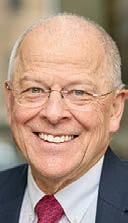
Now that kids are back in school, families are settling into their new routines after a long summer break. It can certainly be a busy time for everyone. But this transition can also be a great opportunity to help our kids — and our households — build healthy behaviors that can carry through the year and beyond. While many behaviors are important for our children’s health and wellness, improving their sleep and activity habits can have especially wide-ranging benefits.

Black Americans have higher rates of incidence and mortality from pancreatic cancer than any other racial or ethnic group.
why the disparities exist, some studies cite systemic racism, the environment, access to nutritious food and barriers to quality healthcare as causes, according to the Pancreatic Cancer Action Network. Often pancreatic cancer symptoms may be hard to recognize, easy to misdiagnose
See CANCER, A8
While many behaviors are important for our children’s health and wellness, improving their sleep and activity habits can have especially wide-ranging benefits.
“It is vital for children to get enough sleep, exercise regularly and limit screen time because these habits are strongly linked to positive outcomes for their physical, mental, cognitive and social development,” said Dr. Mary Fournier, an associate professor of pediatrics at WashU Medicine in St. Louis. Together, these behaviors can help boost heart health, immune function and bone health, among other physical health benefits, she said. But the specific benefits can also reach many other key parts of children’s health and development.
See COLDITZ, A8

a
on a hard-
disease that kills
Americans — especially Black men — at a disproportionate rate. He’s shown performing at the Pori
fes-
Continued from A7
and often ignored until the cancer has progressed to a later, more dangerous stage.
“Early symptoms for the majority of pancreatic and gastrointestinal cancers are vague and often mistaken for diseases that aren’t cancer,” says Dr. Wasif Saif, an oncologist who leads a clinical trials team at the Karmanos Cancer Institute in Detroit. “This leads to a delay in diagnosis and, unfortunately, many are detected at an advanced stage.”
Individually, the symptoms — including abdominal or back pain, unintentional weight loss, diminished appetite, bloating and
unusual bowel movements — aren’t definite signs of pancreatic cancer. But Dr. Leo Moore, an internist specializing in HIV and lifestyle medicine in Los Angeles, says there can be early warning signs, “especially if they start to happen together or don’t go away.”
“Rather than ask for specific tests, I recommend that patients pay close attention to their bodies so that they can provide a detailed account of what they have been experiencing,” Moore says.
Screening for GI cancers isn’t usually recommended for the average person, but is highly recommended for those with hereditary risks, such as if a parent, sibling, or child has had the disease, says

Pancreatic cancer begins when abnormal cells in the pancreas grow and divide uncontrollably, forming a tumor. It is often difficult to detect early because symptoms usually don’t appear until the disease has advanced or spread.
Saif.
People who have Hepatitis B or C should also be regularly screened for pancreatic cancer. While the cancer is easily overlooked, Moore and Saif also recommend regular check-ups and can-
school.
cer screenings for Black Americans to reduce risks of developing late-stage pancreatic cancer.
They also recommend additional screenings for patients who have higher-than-average risk factors for the disease,
such as diabetes and high blood pressure. About 1 in 10 cases of pancreatic cancer are hereditary, in part because of mutations in certain genes that can be passed down, according to the National Cancer Institute.
“Genetic testing helps detect cancer by identifying inherited gene mutations that increase a person’s risk, allowing for preventive measures and early screening,” says Saif. “For those already diagnosed, genetic testing on the tumor itself can identify specific mutations that can be used to guide personalized treatment options.”
Moore says it can be challenging to connect the dots between seemingly innocuous health problems and a life-threatening
disease that can quickly metastasize.
“If you notice weight loss or any of the other symptoms, take note of when you first noticed the symptoms,” he says. “If you have new abdominal pain, pay attention to where it’s located and how long it has persisted. Based on your symptoms, your doctor will order blood work, possibly an abdominal ultrasound or other imaging, such as a CT or MRI, to look closely at the pancreas and nearby organs.”
Paying closer attention to your body will pay off, Moore says.
“Our body often gives us signs when something is wrong. Getting checked as soon as symptoms appear can make all the difference,” he adds.
Continued from A7
Oral Health at A.T. Still University. Founded by seven local physicians, the clinic’s mission is to expand access to preventive and primary care while giving medical and non-medical volunteers hands-on experience in community service.
High school and college Clinic
Continued from A7
students keep the small space running efficiently — taking vitals, organizing charts, filing paperwork and shadowing doctors. Many volunteers are Muslim students who see their work as both professional training and a spiritual duty. One of those students is Nemat Shaikh, a freshman pre-med major at Maryville University, who has volunteered at the clinic since her sophomore year of high
“Each of these behaviors is beneficial, but when all three recommendations are followed, the combined effect is even greater and helps lower a child’s risk of anxiety, depression and behavior problems,” Fournier said. “And research has shown that children with these healthy
“I like it because I can give back in a good way,” she said. “The clinic helps a lot of people who don’t have the money for services.”
Dr. Ata Siddiqui, an anesthesiologist who joined the clinic in 2019, helps manage operations. He said most of the volunteers are from SLU and nearby universities, and they are the “engine” keeping the clinic running.
“I feel like a proud papa
habits tend to perform better academically, think more clearly and have stronger attention, memory and executive function skills.”
A good goal for schoolaged children is at least

when I see them graduate and move on to medical school,” he said. “It’s a good feeling.”
The clinic’s inclusive philosophy has made a difference for patients like Juwariyayh Hussain Baloch, a young dental patient whose family is still waiting for insurance paperwork to process.
“There’s no way that family could go to a traditional dental office without documents,” Siddiqui said. “We go
60 minutes of physical activity every day, but this can include a combination of activities, like playing with friends, walking with the family and sports or other activities. For screen time on phones, computers and TV, it’s generally good to keep it under one to two hours a day outside of schoolwork. And while healthy sleep needs can vary, school-aged children should generally get around nine to 12 hours a night.
Fournier offered these tips to help families meet these goals:
Healthy sleep
Keep screens out of the bedroom — and stop all screen time 30 to 60 minutes before bedtime. Make bedtime the same each night and make it early enough to allow for sufficient sleep. Create a relaxing bedtime routine. Dim the lights, put away screens and engage in soothing activities such as read-
out of our way to help patients like them because our goal is to serve everyone.”
On a recent, rainy Sunday morning, several patients were waiting when the doors opened at 10:30. A handful of volunteers and a couple of professionals were dressed in scrubs and ready to work.
Dr. Rashid was ready, too. Between talking to The St. Louis American and patients, she paused
ing, drawing, writing, listening to quiet music or taking a warm bath or shower.
Limited screen time
Keep screens out of the bedroom, especially at night.
Plan non-screen activities. Play a game, read a book, draw a picture, put together a puzzle or go outside to play.
Save screen time for a special treat or time, especially for younger kids.
Daily physical activity
Add physical activity to daily routines. Walk to school or the store, take the stairs instead of the elevator, involve your kids in active chores like vacuuming or raking leaves.
Make it fun! Find activities that your child enjoys or that your family can do together.
Be a good role model. Kids need to see regular exercise as a normal
to check in with a volunteer. “How many patients have you seen today?” she asked. The young volunteer responded, “A lot.”
“Giving back to the community is important to all of us,” Rashid said. “We’re not just offering a service — we’re giving our time, our expertise and our full effort to ensure everyone who walks through that door is treated with dignity and respect. That’s the mission of this clinic.”
behavior for everyone. Plan family activities where you and your kids can exercise together — daily walks, family bike rides or impromptu dance parties. This can feel like a lot, especially when life with kids can be busy and often unpredictable. But healthy changes don’t have to happen all at once. So, while it’s good to keep longer-term goals in mind, Fournier highlighted the benefits of realistic day-to-day changes:
“While working on all three behaviors can have an amplifying effect on a child’s overall health, even small improvements in any of them can help.”
Dr. Graham A. Colditz, associate director of prevention and control at Siteman Cancer Center at BarnesJewish Hospital and WashU Medicine in St. Louis, is an internationally recognized leader in cancer prevention.

Does Nicki Minaj have a levy on her LA mansion?

The man owed a six-figure judgment against Nicki Minaj and her husband, Kenneth Petty, has reportedly placed a levy on the rapper’s L.A. home as he attempts to seize the property.
Us Weekly is reporting that on Friday, October 17, Thomas Weidenmuller, who was awarded a default judgment of $503,000 against the couple in early 2024, filed court documents revealing he communicated with the Los Angeles Sheriff’s Department over the debt.
Weidenmuller’s lawyer told the celebrity news and gossip outlet that the Los Angeles Sheriff’s Department placed a levy on Minaj’s 11-bedroom, 16-bathroom, 11,820 square foot home in Hidden Hills, California, on September 16. A levy can be placed against a home by a creditor who is owed money as they attempt to be paid from the proceeds of any sale of the home.
Weidenmuller reportedly said he served Minaj with his request to have her home sold off to collect on the money she and her hus band owe him on October 16 by placing a letter on the front door of the home in question.
NBA gambling scandal arrests keep going
Two months ago, retired NBA player Gilbert Arenas arrested on racketeering charges after being accused of running a high stakes gambling ring. Last week, Portland Trailers head coach Chauncey Billups, Miami Heat player Terry Rozier and former NBA player Damon Jones were also arrested on gambling charges.
“vacillating” on a commutation for the music mogul, citing a “high-ranking White House official.”
“There is zero truth to the TMZ report, which we would’ve gladly explained had they reached out before running their fake news,” the official told NBC News in a statement on Tuesday. “The President, not anonymous sources, is the final decider on pardons and commutations.”
A spokesperson for the celebrity news and entertainment outlet reaffirmed the claims made in their report.
“We stand by our story,” TMZ spokesperson Casey Carver told NBC News in a brief statement. In related news, a release date for Combs has reportedly been revealed.

According to CNBC, Billups, Rozier and Jones were separately arrested Thursday morning in connection with federal investigations into gambling.
Billups, a former player for the Detroit Pistons who spent 17 years in the NBA, was arrested in Portland. A five-time All-Star, Billups was inducted into the Basketball Hall of Fame in 2024.
Rozier was arrested in Orlando, Florida. An FBI spokesperson told NBC News that Jones was detained in Las Vegas.
White House denies Diddy pardon claims, expected release date revealed
A White House official pushed back on a report that President Donald Trump is considering commuting Sean “Diddy” Combs’ prison sentence.
TMZ reported last Monday that the president was
News Nation said that online records from the Bureau of Prisons list Combs release date as May of 2028. The outlet said the date reflects time already served, as well as the Bureau of Prisons’ First Step Act, which allows federal inmates to earn “good time credit” for each year of their sentence, potentially leading to serving 85% of their
Earlier this month U.S. District Court Judge Arun Subramanian sentenced Combs to 50 months in prison after he was found guilty on two counts of transportation to engage in prostitution.
Sammie arrested in Atlanta
R&B singer Sammie was taken into custody in Atlanta earlier this month. His arrest reportedly stems from family violence charges made against him.
According to Atlanta ABC affiliate News 11 Alive, Henry County Jail records show that he was booked on October 19 just before midnight and later released with a bond of just more than $1,000. The station’s website said his charges included third-degree cruelty to children, battery (family violence) and “fugitive in-state.”
News 11 Alive said that it is unclear what led to Sammie’s arrest – and that records don’t indicate his exact date of release. However, he performed as part of ONE Musicfest.
Over the weekend he shared a brief video response to the news of his arrest via Instagram.
“I’mma let God have his say, and the courts have their say,” Sammie said. “And the truth shall set you free.”
Sources: 11Alive.com, CNBC.com, NBC News, News Nation, TMZ.com and Us Weekly



















The St. Louis American’s award winning NIE program provides newspapers and resources to more than 8,000 teachers and students each week throughout the school year, at no charge.
teachers and students each week throughout the school year, at no charge.
Questions or comments? Contact Cathy Sewell csewell@stlamerican.com or 618-910-9551
Questions or comments? Contact Cathy Sewell csewell@stlamerican.com or 618-910-9551



Students Aariyah Thompson and Savannah Fisher, in Ms. Stovall’s firstgrade class at Gateway MST Elementary School, are learning how to construct a series circuit.
Bryan Hill Elementary School
3rd grade teacher
Dina
Students at The American’s Summer Science Academy work in teams to discover the many different computer programming languages.
if you are using
like to nominate your class for a Classroom Spotlight, please email: csewell@stlamerican. com
program and would like to nominate your class for a Classroom Spotlight, please email: nie@stlamerican.com.


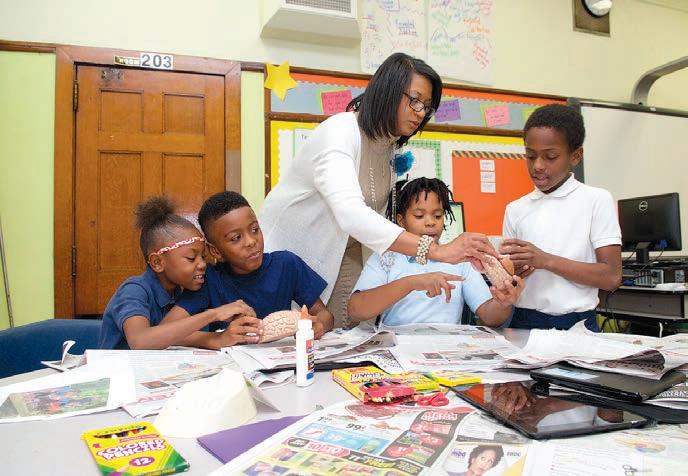


A hurricane forms over tropical and subtropical ocean water. Warm water and cool, moist air combine to create strong winds that can gust up to 200 miles per hour! These winds create waves that bring the storm on shore. Hurricanes are very destructive. They can flip cars, sink boats, uproot trees, and demolish houses.




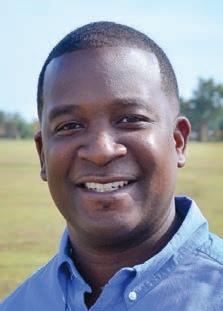


Have you ever wondered how the brain responds to different substances? Dr. Carl Hart is a real-life scientist who studies how drugs affect the brain and behavior. His research challenges common beliefs and helps us understand addiction in a new way.
Dr. Hart grew up in the Carol City neighborhood of Miami Gardens, Florida, which was known for its challenges.
Despite these difficulties, he excelled in sports and academics.
Jeanette Jones was born on September 19, 1950, in Fort Valley, Georgia. Jones graduated from Fort Valley State University in 1972 with a bachelor’s degree in biology education. In 1973, Jones received her master’s degree in botany and mycology (a branch of biology that studies fungi) from The Ohio State University. In 1976, she received her doctorate (Ph.D.) degree.
William (Bill) Parker grew up in New Orleans. He graduated from JFK High School, which focused on math, science, and engineering. Parker was interested in hurricanes at a young age, but he became interested in the weather after a high school statistics class. In this class, he learned how to predict the chance of rain. Parker wanted to attend a historically black college/ university (HBCU), so he chose Jackson State University to study meteorology. He graduated with his bachelor’s degree, in 1994.

In addition to powerful winds, hurricanes bring a lot of rain. (Taiwan received 114 inches of rain in three days during a hurricane.) These rains can cause landslides and flash floods.
Brain tumors are a mass of cells that have grown abnormally. These tumors can put pressure on different parts of the brain and can affect the way your body functions. Although the exact cause of brain tumors is not known, research has shown that they are caused from either genetics (passed down from family members), or environment. Some tumors are cancerous, which means they can travel to other parts of the body. Some tumors are not cancerous. These are called benign tumors. Doctors can treat tumors with surgery, chemotherapy, or radiation.

Doctors use CT scans or MRI imaging to diagnose tumors. They look at the location, types of cells involved, and how quickly it
Fungi are organisms made of filaments (called hyphe) that are stacked together. Unlike plants, fungi do not have chlorophyll, so they cannot make their own food. Some fungi are parasites, which mean they live off of other organisms. Some fungi feed off of dead and decaying matter. Fungi are everywhere in the environment, including the soil, lakes, river and seas, air, and on plants and animals. Fungi (plural of fungus) help organic matter to decay and release carbon and oxygen into the environment. Unlike plants, fungi do not have
In this experiment, you’ll create a replica of a hurricane and identify how the forces work together to create a hurricane.


Materials Needed:
• 2 Soda Bottles • 3 Paper Clips
• 3 Peanuts • ¼ C. Sand • Funnel • Water • Duct Tape
Materials Needed:
Procedure:
• 3 slices of bread • Water • 3 Ziploc bags
q Fill one bottle with the paperclips, peanuts and sand. These represent the debris and help make the movement of water easier to see.
• 10x10 square centimeter grid • Ruler Process:
w Place the funnel in the mouth of the bottle and pour water into the bottle until it is 3/4 full, then remove the funnel.
q Wet one slice of bread enough to make it moist and place it in a bag. Seal the bag very tightly.
e Turn the second empty bottle upside down and hold it over the first bottle so that the mouths of the bottle are aligned. The bottles will look like an hourglass.
w Place the two other slices of dry bread in two separate bags and

Hurricanes can last a few hours or several days. Most hurricanes occur during the fall months. How can you stay safe? Have an evacuation plan and an emergency kit prepared. Meteorologists can track these storms and keep you informed. For more hurricane facts, visit: http://www.sciencekids.co.nz/ sciencefacts/weather/hurricane.html.
leaves, stems, or roots. Fungi use spores to reproduce. One common type of fungus is the mushrooms you find on your pizza. Mold, yeasts, and mildew are also types of fungus.
For More Information, Go to: https://kids.kiddle.co/Fungus
Learning Standards: I can read nonfiction text for main idea and supporting details.
grows. They use the information to categorize the tumors. There are three categories. Low grade/high grade: low grade tumors are slow growing, and high grade tumors are fast growing. Localized/invasive: localized tumors are in one area and are usually easier to remove, invasive have spread to other areas and are more difficult to remove. Primary/ secondary: primary tumors start in the brain, secondary tumors start elsewhere in the body and spread to the brain.
Learning Standards: I can read nonfiction text for main idea and supporting details. I can make text-to-text connections.
Learning Standards: I can read nonfiction text to gain background information about fungi.
create a watertight seal. Continue taping 1 to 2 inches above and below the seam.
t Hold the bottles by the middle and lift the jugs.
In this experiment, you will learn how mold grows best. Mold is an important fungus that has several uses, including breaking down dead organic material. Some purified molds are actually used as an antibiotic to treat illnesses.
After high school, he served in the United States Air Force, which helped him pursue higher education. He earned a Bachelor of Science degree in psychology from the University of Maryland and both a Master of Science and Ph.D. in psychology/neuroscience from the University of Wyoming. In 1996, he became the first Black person in the U.S. to earn a Ph.D. in neuroscience.
She also studied at the University of Nevada, the University of California Medical School, the National Center for Disease Control-Atlanta, and the Massachusetts Institute of Technology.
Dr. Hart focuses on how psychoactive drugs—like cocaine, heroin, and marijuana—affect the brain and behavior. He conducts research with human participants to understand how these substances influence decision-making, pleasure, and addiction. His work aims to develop more effective treatments for substance use disorders and to inform drug policies based on scientific evidence.
After graduation, Alabama A&M University hired Jones as an assistant biology professor. In 1986, she served as an adjunct professor in the College of Pharmacy and Pharmaceutical Services at Florida Agricultural and Mechanical University and worked on a project with NASA. In 1991, Jones served as the first female vice president of research and development at Alabama A&M University. She also served as President of Alabama A&M University’s Faculty Senate from 2001 to 2006. In 1992, she was appointed to the U.S. Army Science Board by the U.S. Secretary of the Army, Togo West. Since 2004 Jones has been the director of the Center for Biomedical, Behavioral, and Environment Research at Alabama A&M University. She also worked as a consultant with federal agencies to help them develop training programs to attract women and minorities to STEM education and careers.
y Quickly, turn the bottles over so that the water-filled bottle is on top. Set the bottles on the table again.
e
r
i Turn the bottles over again. This time, shake the bottles in a circular motion. Be sure to keep the bottles vertical.
t For five days, measure the square centimeters of mold on each piece of bread through the bag. Use a grid, if possible, or a ruler. If mold covers more than half a square centimeter, it is counted as one full centimeter. If it is less, it is counted as 0 centimeters. This will give you the area of mold on each slice of bread y At the end of a week (5 days of measuring) or longer, use your final results to say what percentage of the bread was covered in mold. Make a table or graph to display the information.
Beyond his research, Dr. Hart is dedicated to challenging stereotypes and promoting a more nuanced understanding of drug use. He has written books and delivered talks to encourage open discussions about drugs and their effects. His work empowers others to think critically about complex issues and to approach them with empathy and understanding. Dr. Hart’s research helps us understand that addiction is not just about the drugs themselves but also about the environment and circumstances surrounding individuals. By studying the brain’s response to substances, he contributes to developing fairer and more effective drug policies and treatments.
u Observe the water as it drains into the bottle below. The water competes with the air from the empty bottle. Both substances push to pass through the neck.
o The water will form a vortex as it drains into the next bottle. The water will flow along the outside of the neck, while air moves quickly up through the center of the vortex. The water will drain much faster.
Analyze: How did water and air create a hurricane?
ELA Questions Main Idea: What is Dr. Carl Hart’s main area of research, and why is it important?
Vocabulary: The article mentions “psychoactive drugs.”
In 1993, he began to gain experience in the field when he worked as a student meteorologist. One year later, he was a meteorologist intern at Shreveport. In 1998, Parker became a general forecaster, and ten years later, a lead forecaster. In 2012, he became a warning coordination meteorologist (WCM). There are only 122 people with this title in the United States, and Parker was the only African American. Parker is currently the meteorologist-in-charge (MIC) at the National Weather Service, leading a team of 26 weather professionals. Parker is also very active as a volunteer in his community. He is a member of the Shreveport-Bossier Mayors’ Prayer Breakfast Executive Committee, La Cima Bilingual Leadership Academy, Bossier Chamber of Commerce Education Committee, Volunteers for Youth Justice, and a coach for Bossier Parks and Recreation. Parker is also an associate minister at Elizabeth Baptist Church in Benton, where he has been serving the congregation since 1997.

Based on the context, what do you think this term means?
In 1975, Jones was listed in the World’s Women’s Who’s Who and she was named an Outstanding Young Woman of America in 1978. Beta Beta Beta National Biological Honor Society awarded her the distinguished service award. Jones also received the Significant Service Award from the NASA Space Life Sciences Training Program and the Extramural Associate Research Development Award from the National Institute of Health. In 1990 and 2006, she was named Woman of the Year at Alabama A&M University and was given the Outstanding Leadership Award by the Faculty Senate. The U.S. Army presented Jones the Commander’s Award for Outstanding Civilian Service as a member of the Army Science Board.
Learning Standards: I can follow sequential directions for an experiment. I can draw conclusions and analyze results. Enjoy

Discussion Questions: and honors. How would you describe her achievements and her contributions to science? Dr. Jones is studying how fungi might be used as agents of war. What purpose do you think fungi serve in modern warfare? Are fungi beneficial or harmful?
e Place the bag with the wet slice of bread and one of the bags with a dry slice of bread in a dark place, such as a closed cabinet or closet.
Put your brain to work and develop your critical thinking skills with these word problems.
r Tape the seam, pressing the duct tape firmly to
r Place the third bag with a dry slice

z In a given school, there are 280 boys and 230 girls.
z A hurricane has moved 456 miles in 6 hours. How many miles per hour is the hurricane traveling? ______ If it continues to travel at that speed, how far will it travel in 10 hours? ______ x Hurricane Frederick is traveling at 86 miles per hour. If the hurricane is 129 miles from the coast, how many hours will it take until the hurricane reaches the coast? ______
a) What is the ratio of the number of girls to the number of boys?
Learning Standards: I can follow sequential directions to complete an experiment. I can make observations and draw conclusions.
x If Tim and his family had lunch at $30.50 and he gave a 15% tip, how much did they spend?
b) What is the ratio of the number of boys to the total number of pupils in the school? ______
Discussion Questions: How much mold was on the bread? Which location had the most mold? Which had the least? What conclusions can you draw about the conditions in which mold grows? How can food manufacturers and restaurant owners use this information to help them?
Learning Standards: I can follow sequential directions to complete an experiment. I can display my results, make observations, and draw conclusions.

Scientists often use tables and graphs to display the results of their research. Looking at these displays, you can draw conclusions.
c If a car gets 26 miles per gallon of gasoline, how many gallons of gasoline would be needed to travel 150 miles? ______
As we approach spring weather (and increased rain), create a bar graph that displays the amount of rain that falls for several consecutive days or weeks. (Day 1: 1.5 inches, Day 2: 0 inches, Day 3: 1.5 inches, etc.)

c A tropical storm takes on a hurricane status when the winds reach 74 miles per hour. After three days, Tropical Storm X has grown to have wind speeds of 48 miles per hour. How much faster will the winds have to become for Tropical Storm X to become Hurricane X? ______ v Upon landfall of a Category 4 hurricane, local officials ordered an evacuation. City A has a population of 9,613, City B has a population of 5,013 and City C has a population of 3,972. How many people were evacuated in all? After citizens returned to their houses after the evacuation, reports of damage were totaled. City A reported

v If gas cost $2.10 per gallon, how much would it cost to fill a car that holds 18 gallons?



This special Newspaper In Education initiative is made possible, and delivered to classrooms through the St. Louis American Foundation and its NIE Corporate Partners:
Learning Standards: an African American who has made contributions in science, math, technology, or
Parker believes in serving as a role model to the youth and to recruiting African Americans in the STEM field. Personally, he has hired three African-American meteorologists. In addition, he has recruited minorities for summer intern positions. Parker has also mentored an Airline High School student for his senior project. Parker’s advice to students interested in meteorology is to take as many math and science classes as possible. Learn about summer opportunities in your community. If you are interested in meteorology, visit National Weather Service offices and serve as a volunteer or intern, and find leaders in your community to serve as your personal role models.

Learning Standards: a person who has made contributions to the fields of science, technology,



I can use the information to make deductions and inferences.
There are over 10,000 species of mold, with 1,000 of those species found in the United States.

$115,264 in damage, City B reported $236,096 and City C reported $436,869 in damages. What was the total cost of damages rounded to the nearest thousand? ______ If the state and federal government promised $500,000 in aid, how much would the local people have to raise by themselves? ______ Learning Standards: I can add, subtract, multiply, and divide to solve a problem.

Advertisement Estimations: A family member wants a new television and thinks a reasonable price is less than $300. Using the advertisements, locate three televisions (include brand, price, size, etc.) Compare the prices. Is $300 a reasonable estimate?







Learning Standards: I can use the newspaper to locate information. I can classify information. I can make text-to-self connections.

a picture of a building in the newspaper and tell what kind of jobs people who work in that building



Over a period of weeks, clip articles from newspapers that deal with problems and issues facing your local or county government. Discuss the reasons for these problems and how the government hopes to solve them.
Learning Standards: I can use the newspaper to locate information. I can discuss problems and solutions. I can identify types of jobs. I can make text-to-world connections.





Continued from A1
it’s for everyone.” Wheeler-Jones remembers the park across the street from her church, where she joined Easter egg hunts as a child and walked to Beaumont High School. She hopes Fairground Park will one day receive the same care and recognition as Forest Park or Tower Grove Park. “I want this to be a destination park,” she said. Dennis Robinson, also a longtime resident of the area, says Fairground Park is more than just green space — it’s a piece of his family’s story. His family has lived in the Fairground neighborhood since 1965, and the same house remains in the family today. “I’ve lived here my whole life,” he said. “This neighborhood raised me.” He remembers fishing at the lake, hanging out with friends, even getting his first kiss on the park bridge. “It was good to live that close to the park,” he said. The decline of Fairground Park mirrors the broader neglect of north St. Louis, WheelerJones said. The park sits at a major corridor — Grand and Natural Bridge — once a thriving route that
Continued from A1
connects the neighborhood to downtown and Lambert Airport. She recalls when both the park and the neighborhood were well cared for — the bridge she crossed to school was pristine, the grounds neatly kept. Today, that sense of pride has faded. Like WheelerJones, Robinson’s fondest memories are rooted in the park. Growing up in the Pruitt-Igoe housing projects, he said Fairground Park felt like paradise. “There were no parks where I came from. When I saw Fairground, it was heaven,” he said. “We’d spend the whole day there — riding bikes, playing baseball, football. We finally got to play on grass. It was a wonderful place, just a good time.”
“There is no love for the park, no consideration for it — or the people that live around here,” the co-founder said.
Wheeler-Jones hopes the new organization will spark residents to get involved, share their ideas and play a role in bringing the park back to life.
A park with deep roots
Fairground Park tells the story of St. Louis. Established in 1856, it was privately owned by the St. Louis Agricultural and Mechanical Association
ic freedom, access, free expression, and research integrity.”
The decision followed mounting internal opposition.
The WashU chapter of the American Association of University Professors said the compact threatens the university’s mission and academic freedom.
The Faculty Senate Council warned of “serious threats the Compact poses to academic freedom, educational integrity and scientific inquiry.”
Student groups also
and used in its early years for expositions, horse racing and fairs.
During the Civil War, the site became Benton Barracks, which included a large Union Army hospital. Confederate prisoners also passed through, making the park a landscape layered with conflicting histories.
In 1908, St. Louis purchased the 132 acres for $700,000 and officially dedicated Fairground Park in 1909. By 1912, the city had built one of the nation’s largest municipal swimming pools that, at the time, was for white residents only.
Tension from that exclusion erupted in June 1949, when Black children attempted to integrate the pool. A race riot erupted, with mobs of white residents chasing, beating and harassing swimmers. Order wasn’t restored until police were called in. The city temporarily re-segregated the pools, but lawsuits eventually forced full integration in 1950.
disinvestment that left the park and its surrounding community struggling.
Decline, disinvestment and disaster
For much of the 20th century, Fairground Park was a centerpiece of neighborhood life.
For much of the 20th century, Fairground Park was a centerpiece of neighborhood life. Local churches held Easter egg hunts and picnics. Beaumont High School students practiced baseball and track there. Families strolled the grounds beneath the shade of century-old trees. But after the 1949 riot and the subsequent wave of white flight, the neighborhood changed dramatically. City funding shrank, and the park slowly deteriorated. Unlike Forest Park, which benefited from Forest Park Forever, Fairground Park lacked a nonprofit partner to champion its upkeep.
The riot is widely seen by historians as a pivotal moment that fueled white flight from the area, accelerating decades of
mobilized. Nineteen campus organizations signed a joint statement urging Martin not to sign, calling the compact a “frightening attack on the well-being and success of students of color, queer students, and disabled students, who collectively comprise a majority of the WashU undergraduate student body.”
Martin emphasized that the university had accepted an invitation to “participate constructively” in meetings with federal officials, but “partic-
Robinson watched the park’s condition decline over the decades. By the mid-1980s, he said, the baseball games were gone, and the energy that once filled the park began to fade. “People lost jobs, lost resources, and couldn’t keep up their
ipation does not mean we have endorsed or signed on to the proposal.”
WashU was among eight universities represented at a White House meeting last week, along with the University of Kansas and Arizona State University, according to Student Life, the independent student newspaper.
Several prominent institutions — including the Massachusetts Institute of Technology, Brown University and the University of Virginia — also have rejected the
property — or the park,” he said. “You’d see trash everywhere, people hanging out all night, and the buildings and bridges just started crumbling.”
Data from the St. Louis Resilience Archive, an online city resource, show that poverty levels remain high, with limited investment and widespread vacancy across north St. Louis. The May 16 tornado deepened the pain. North St. Louis was among the hardest-hit areas: More than 5,000 buildings were damaged or destroyed, causing an estimated $1.6 billion in property losses, according to the archive.
Destruction from the storm was another reminder of how fragile life can be in a community already struggling.
A new push for renewal
Fairground Park for All believes this time can be different. The organization already has launched cleanup and beautification campaigns and is working with neighborhood associations to gather input.
Leaders say their model is simple: Pair community passion with the structure and stability of a dedicated nonprofit, much like Forest Park Forever. The group envisions the park as a destination that
compact.
Continued from A1 processes.” Chancellor Andrew D. Martin confirmed last week in a message to faculty that the university “won’t sign the proposed Compact for Academic Excellence in Higher Education … or any document that undermines our mission or our core values, perhaps highest among these our commitment to academ-

draws visitors from across the metro area while remaining rooted in north St. Louis. Residents have asked for new amenities, locally owned businesses nearby and better park maintenance.
Looking forward
For residents, the challenge is not just about restoring a park — it’s about restoring hope. Although the tornado worsened the devastation in north St. Louis, Wheeler-Jones urges the community not to let it stall progress. “Don’t lose interest because of the tornado, don’t let it stop us,” she said. “The park can be the catalyst to bring change to our area. This is a visionary step for our community.”
Robinson still walks the park five days a week. “I’d like to see the park better — a place where people can have family reunions without having to go somewhere else,” he said.
Robinson says he’d welcome stricter maintenance rules or even fines for littering, which he says are rarely enforced. More than anything, he wants to see the park restored for future generations. “I love this park,” he said. “I just want it to be beautiful again.”
The St. Louis PostDispatch editorial board wrote Oct. 20 that “much of the compact’s language is so vague as to allow the administration to allege violation of it (and thus yanking funding, even retroactively) on purely subjective ideological grounds.”
Martin said WashU’s decision to stay in conversation with federal officials reflects the university’s belief in maintaining dialogue between government and higher education.
“We have chosen to participate in this conversation because we have been invited and with the intention of promoting our mission, values, and independence by having our voice at the table,” he wrote. “We stand by that.”
Inside Higher Ed described WashU’s stance as cautious, noting that while Martin’s message amounted to a clear rejection, university officials have avoided labeling it that way publicly.
The Trump administration’s push for the
noon to 3 p.m. on Nov. 8 and 15 at its headquarters, 1408 N. Kingshighway.
The organization’s annual holiday turkey and food giveaway will follow on Nov. 25, two days before Thanksgiving.
McMillan noted the bad timing of the potential crisis.
“This is the worst time for this to happen,” he said, citing the approaching holidays and existing cuts to USDA funding for food pantries. “This is a storm on top of the storms. This is a man-made disaster, and it is just complicating everything once again.”
The Senate remains at an impasse as Democrats push to protect health care funding and Republicans refuse to advance a shortterm measure without broader spending cuts. Without federal action, Missouri officials say there are no state funds available to cover SNAP benefits, which are fully funded through the USDA’s Food and Nutrition Service.
State Rep. Ray Reed has urged Gov. Mike Kehoe to follow Republican Virginia Gov. Glenn Youngkin’s exam-
compact comes amid escalating national debate over diversity programs and political influence in education. For universities like WashU — whose student body includes significant international enrollment and a growing population of first-generation and underrepresented students — the stakes go far beyond politics.
“The proposal,” said one faculty statement, “would erode the university’s ability to pursue inclusive excellence and maintain the diversity that fuels innovation and discovery.”
WashU’s choice places it firmly among research universities rejecting the compact while continuing to press for dialogue about the future of academic freedom and access in American higher education.
Sylvester Brown Jr. is the Deaconess Foundation Community Advocacy Fellow. Ashley Winters contributed to this report.
ple by declaring a state of emergency to bolster food banks.
“The governor has both the authority and the responsibility to help,” Reed said. “Every child who goes to bed hungry, every parent forced to skip a meal to feed their family — that’s a failure of leadership we can prevent, if we choose to act.”
Local food organizations also are bracing for the impact. Operation Food Search held a community food drive Wednesday at City Foundry. Donation barrels are available throughout the complex, and drive-through drop-offs will be collected at the Vandeventer roundabout.
“Ninety percent of the food assistance people receive comes from programs like SNAP,” said Kristen V. Wild, OFS president and CEO. “We will need significant help from the community to fill that gap.”
McMillan encouraged residents to support the effort financially or with food donations at the Urban League headquarters. “On Nov. 1, we will face a humanitarian crisis,” he said. “We’re asking everyone who can to step up and help.”
to action, turning years of resident-led visioning into tangible, visible improvements. Each project reflects goals identified in neighborhood plans adopted by the City Planning Commission after extensive community engagement.
“These awards represent neighborhoods taking charge of their future,” said Nahuel Fefer, CDA’s executive director. “Residents have spent years developing thoughtful plans. This funding helps turn those plans into action — making visible progress toward safer, stronger and more vibrant communities.”
In Skinker DeBaliviere, a $242,825 award will transform two underused lots along Delmar Boulevard — at Hamilton and Des Peres avenues — into new public spaces.
One site will serve as a community gathering area; the other will become a dog park. The projects align with the WeCollab Reinvestment Plan from 2023, which aims to activate vacant land and strengthen connections along the Delmar corridor.
In north St. Louis, Brickline North CDC will receive $279,500 to deploy three pilot shipping-container business incubators along the Brickline Greenway in the JeffVander-Lou and St. Louis Place neighborhoods.
The reimagined containers will host vendor markets, food pop-ups and cultural events that showcase local creativity and entrepreneurship. In partnership with Mission St. Louis and Tabernacle CDC, the initiative will also provide hands-on training for new small business owners.
“This is exactly why the Brickline North CDC was formed — to support neighbors in building capacity and opportunity,” said Daphne Redding, vice president of BNCDC and a
St. Louis Place resident.
A $388,000 award to the Downtown Neighborhood Association, in partnership with the Locust Business District, will enhance the “City Commons” corridor between 18th Street and Jefferson Avenue with new signage, monuments and video displays.
The project, guided by the 2020 Design Downtown STL Plan aims to help visitors and residents better navigate the growing area surrounding CITYPARK, the Brickline Greenway and future Metro Green Line and NGA campus developments.
“This part of St. Louis is emerging as a key connecting piece between Downtown and Midtown,” said Ann Kittlaus, executive director of the Locust Central Business District. “The timing and impact of this grant are incredible—it will help people explore and experience the area’s growth.”
James Page, executive director of the Downtown Neighborhood Association, said the effort is only the beginning. “We envision future investments that will provide improvements to safety, security, quality of life and sense of community for residents, workers, visitors and sports fans — all guided by the Downtown Plan,” he said.
In the West End, Cornerstone CDC will use a $234,376 award to redevelop the long-vacant warehouse at 900 Hodiamont Ave., at the western trailhead of the planned Hodiamont Greenway.
The project will convert the blighted site into a flexible space for neighborhood events, pop-up markets and small business activations. Situated near Gwen Giles Park and several intersecting greenways, the redevelopment will serve as a gateway connecting the West End to surrounding neighborhoods.
“The residents’ vision for a vibrant, multi-use green corridor is one step closer to reality,” said Monique Thomas, Cornerstone CDC’s executive director. “This marks an exciting milestone for the West End and the power of resident-led planning.”
The Neighborhood Plan Implementation Awards were created under the city’s Economic Development Sales Tax Ordinance, which dedicates 10% of revenue to projects that advance officially adopted neighborhood plans. Applications are reviewed competitively based on alignment with community goals, feasibility and potential impact.
Since its founding in 1974, the Community Development Administration has invested roughly $25 million annually in housing, infrastructure and community development across St. Louis. CDA collaborates with HUD, the Planning and Urban Design Agency and the St. Louis Development Corporation to ensure transparency and equity in funding.
“The best ideas for how to strengthen St. Louis come from the people who live here,” said Mayor Cara Spencer. “These projects are the result of residents working together to plan the future — and the city following through with the resources to make their visions real.”
The city’s PlanSTL program continues to collaborate with neighborhoods to develop and adopt new plans, ensuring that resident-driven priorities shape the city’s future.
From new signage downtown to community gathering spaces and small business incubators in the north and west, the 2025 Neighborhood Plan Implementation Awards mark visible progress toward a more connected and inclusive St. Louis.
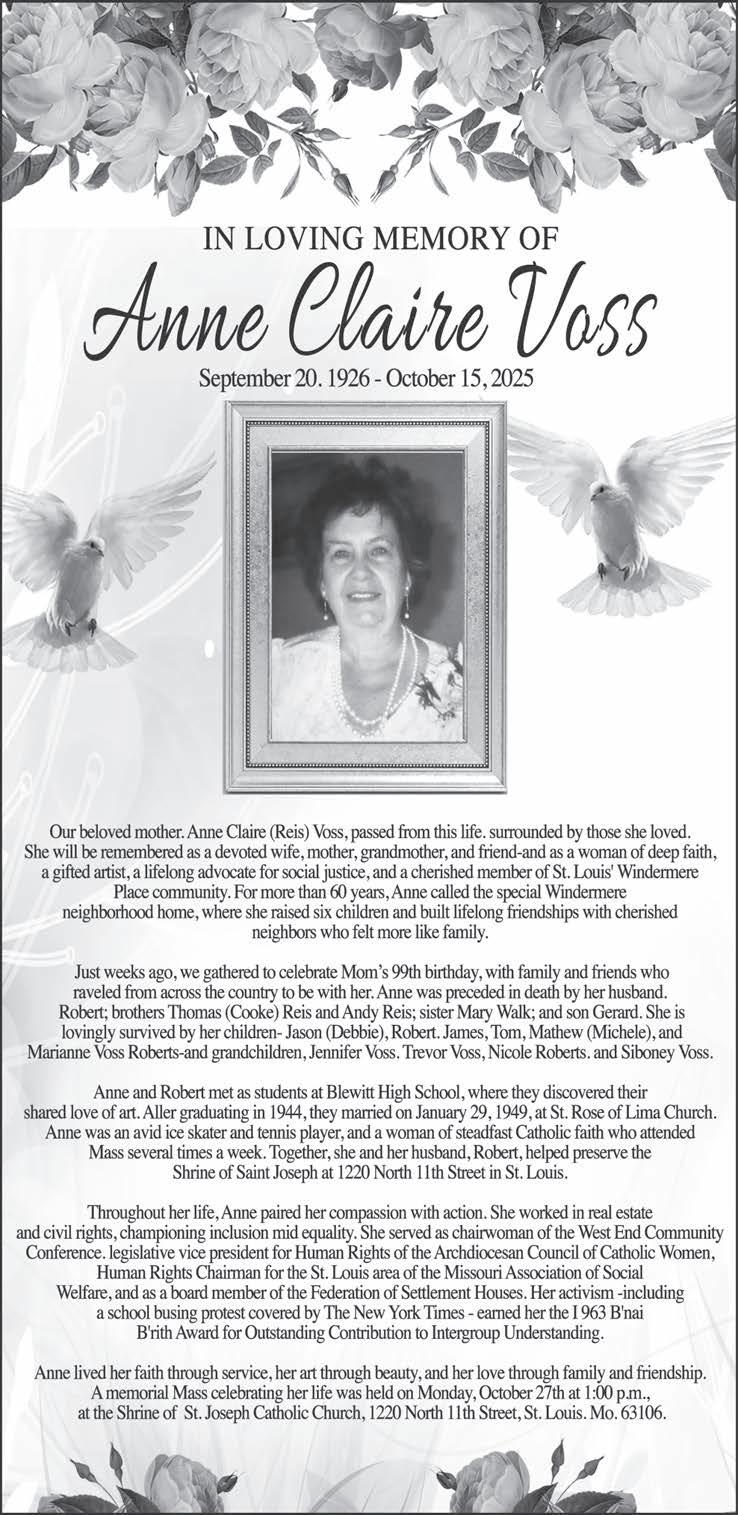



By Zaria Mac St. Louis American
Armed with two decades of chart-topping hits, innovation, and unforgettable melodies, T-Pain gave St. Louis audiences every reason to light up when he came to town Friday night for his TP20 Tour. The Grammy Award-winning artist, producer, and founder of Nappy Boy Entertainment took over The Factory in Chesterfield for a sold-out, high-energy show that paid homage to his musical journey.
“This is twenty years of T-Pain,” he told the roaring crowd midway through his set. “I know how easy it is to lose fans… to offend people… to get it wrong. But y’all? You’ve stuck with me through my highest highs and my lowest lows — flaws and all. I appreciate you for that.”
The show wasn’t just a concert — it was a fullscale celebration of legacy and reinvention. From the moment T-Pain stepped on stage flanked by glowing Roman numeral X’s (representing 20) and Gatsby-inspired wallpaper floating across the LED wall, The Factory transformed into a roaring 1920s-meets-2020s party.
Before T-Pain’s grand entrance, the stage was warmed up by a diverse group of openers — each bringing their own energy and flair.
Asaka the Renegade kicked things off. Sporting a jersey emblazoned with “XX” on the front and “T-Pain” on the back. His confidence was magnetic as he performed “The Bag,” a bass-heavy anthem that had the early crowd moving. There’s no doubt Asaka is one to watch — his charisma and control of the stage showed real star quality.
See T-Pain, B3
“I hope and pray that in the next year, I don’t have to rap about certain things that I rapped about on this album. I want to be in a better space with men… I want a new era, new everything.” - Cardi B on working on her new album

By Kenya Vaughn St. Louis American
Playwright Tarell Alvin McCraney gives voice to thoughts and feelings many Black men have been conditioned to suppress. His work consistently offers nuance and authenticity to the internal conflicts surrounding identity and sexuality—bringing what’s often left unsaid to center stage.
Mainstream audiences were first introduced to McCraney’s artistry through “Moonlight,” Barry Jenkins’ Academy Award-winning adaptation of his semi-autobiographical play “In Moonlight Black Boys Look Blue.” The 2016 film earned “Best Picture” honors and won McCraney and Jenkins the Oscar for “Best Adapted Screenplay.”
Last Friday, The Repertory Theatre of St. Louis opened its Steve Woolf Studio Series season with the St. Louis premiere of McCraney’s “The Brothers Size,” which runs through November 16. The
second installment of his “Brother/Sister Plays” trilogy, the drama explores the complex relationship between Ogun and Oshoosi Size. As the older brother, Ogun inherits the role of patriarch—tasked with guiding his free-spirited younger sibling back onto a stable path after a stint in prison. But Ogun’s efforts are challenged by Oshoosi’s friend Elegba, whose bond with him—strengthened during their incarceration—pulls him in a different direction. Every step Ogun pushes forward, Elegba pulls back, until the tension reaches a breaking point.
The Rep assembled a dream team of Black St. Louis creatives to bring “The Brothers Size” to life. Directed by Jacqueline Thompson, the production features choreography by Kirven DouthitBoyd, sound design by Tre’von Griffith, scenic and lighting design by Jayson M. Lawshee, and costumes by Kristie C. Osi. Each artist understood the assignment— and delivered.
The play offers The Rep’s audience a

T.Moore’s 11th Annual Saint Louis Black Fashion Week returns this weekend
By Zaria Mac St. Louis American
Black style sets trends everywhere in the world. This region is no exception. Once again, T.Moore and his team will issue a reminder through Saint Louis Black Fashion Week. Taking place November 1 -2, the programming is presented in part by The Pennywell Hotel. Moore and his style squad are curating a fashion experience designed to elevate the city’s creative scene and honor its homegrown talent. “This is for the city,” Moore said. “We don’t have to go to New York or Paris or London in order to see Black excellence.” He wants the city to come out and see the amazing homegrown talent that has the gifts and skills to emerge within the national and global style industry. “You often get the term ‘church

front-row seat to unapologetic Blackness expressed through theater. The language is authentic. The staging demands full attention. The three-person cast moves fluidly around the circular performance space, at times sitting shoulder to shoulder with audience members—blurring the line between stage and life.
Even before the curtain rises, Griffith sets the tone with a pre-show playlist that includes Juvenile’s late ’90s club classic “Back That [expletive] Up.” The show opens with ritual—movement led by Douthit-Boyd—that reads as prayer.
The scene, rich in African symbolism, may feel separate from the contemporary narrative that follows. But McCraney reminds viewers that the spiritual realm is always present in Black life.
The cast fully embodies the emotional weight of McCraney’s script. The play intriguingly begins with actors reciting the script’s interior language—rich in sensory detail and emotional nuance— before delivering their actual lines. Once the audience grasps this technique, they

“Bye week, heal up, get away from each other a little bit, that’s always a good thing.”
— Philadelphia Eagles running back Saquon Barkley
With Earl Austin Jr.
The road to the state championship begins for teams in Missouri and Illinois as postseason competition gets underway this weekend.
On the Missouri side, everyone will be participating in the district playoffs. The firstround games will be held this weekend with many of the top teams getting byes until next week.
The most intriguing playoff grouping will be in Class 6, District 2, which has a loaded field of teams. Heading the field are No. 1 seed CBC and No. 2 seed Lafayette, who both finished the regular season with 9-0 records. Also in the district are SLUH (7-2) and DeSmet, which won the state championship last season.
To get all of the pairings and brackets for the Illinois state playoffs, you can visit the website, www.ihsa.org.

The Undefeated Congratulations to the teams that finished the regular season with undefeated records. In addition to CBC and Lafayette, the other undefeated teams were Gateway STEM and St. Dominic. All four teams finished the season with 9-0 records. Gateway STEM is the No. 1 seed in the Class 4, District 3 field. St. Dominic is the No. 1 seed in Class 6, District 4.
Standout Performers from Week 9
To get all of the first-round pairings and brackets of all six classes, you can visit the website, www.mshsaa.org.
On the Illinois side, all eyes will be on the East St. Louis Flyers, who are looking to bring home another IHSA Class 6A state championship. The Flyers (6-3) are the No. 8 seed in their bracket. They will host No. 9 seed Plainfield East in a firstround game at Jordan Stadium in East St. Louis. As of press time, the date and time is still TBD.
Travis Allen (University City): The sophomore running back rushed for 185 yards on 29 carries and two touchdowns in the Lions’ 38-6 victory over Jennings.
Trystan King (Parkway South): The junior running back rushed for 234 yards on 22 carries and four touchdowns in the Patriots’ 42-8 victory over Hazelwood West.
Terrance Little (Hazelwood East): The junior running back rushed for 169 yards on 24 carries

and a touchdown in the Spartans’ 21-17 victory over Parkway West.
Nick McClellan
(CBC): The senior quarterback amassed 315 yards of total offense and had
three touchdowns in the Cadets’ 56-9 victory over St. Mary’s.
Jayden Burleson (Fort Zumwalt North): The junior running back rushed for 195 yards on seven
With Alvin A. Reid
carries and four touchdowns in the Panthers’ 49-14 victory over Timberland.
Manny Ellis (Cardinal Ritter): The senior running back scored four
rushing touchdowns in the Lions’ 42-22 victory over Lutheran North.
Sullivan Thornton (Wentzville Liberty): The junior quarterback completed 17 of 23 passes for 259 yards and two touchdowns in the Eagles’ 42-10 victory over Holt.
Isaac Hudson (Chaminade): The junior wide receiver caught five passes for 110 yards and two touchdowns in the Red Devils’ 37-27 victory over Hickman.
Terance Bills (Lafayette): The senior wide receiver caught six passes for 110 yards and a touchdown in the Lancers’ 43-15 victory over Marquette.
Cam Sharp (DeSmet): The junior running back rushed for 175 yards on 20 carries and a touchdown in the Spartans’ 30-15 victory over Edwardsville.
Ta’vren Williams (North Point): The junior quarterback completed seven of seven passes for 195 yards and five touchdowns in the Grizzlies’ 67-10 victory over St. Charles.
Kindall Young (Summit): The junior running back rushed for 244 yards on 36 carries and a touchdown in the Falcons’ 26-0 victory over Ritenour.
On Dec. 1, I’m sure I’ll do two things.
First, I’ll call my friend Bryan Haynes, an internationally famous artist who I met in third grade at Robinson Elementary School in Kirkwood. It’s his birthday.
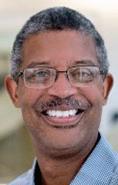
Second, I will place my first legal sportsbook wager in Missouri. It will be Day No. 1 for legalized gaming in the Show Me State. For those of us who support legal wagering, last week was rugged. The U.S. Justice Department announced that 34 people had been indicted in a nationwide gambling conspiracy including Portland Trail Blazers coach Chauncey Billups, Miami Heat guard Terry Rozier and former Cleveland Cavaliers assistant Damon Jones. According to the FBI, Billups is charged with participating in a conspiracy to fix high-stakes card games that were backed
by Mafia crime families. Rozier faces another count for funneling confidential information about NBA athletes and teams. Jones is also jammed up in both charges.
Of the 34 people in the FBI’s crosshairs, only three are charged in both conspiracies — Rozier, Jones and Eric “Spook” Earnest of St. Louis. Talk about showing up and showing out.
“Goodfellas” got inside the NBA, and it is not pretty.
Now, remember the “Sanford and Son” episode when several poker hustlers were taking Lamont to the cleaners. Fred figures out the scheme and cheats them by using a pair of glasses that allow him to see through his “lucky” deck of cards.
Billups allegedly sat in on games that lured high rollers by offering the chance to play with celebrities.
The cheating involved modified card shufflers, poker chip tray analyzers, X-ray devices and marked cards readable through special contact lenses or glasses. Offsite accomplic-

es monitored the cards and relayed information back to players at the table.
“I apologize to our fans that we are all dealing with this situation,” NBA Commissioner Adam Silver said in an interview on Amazon Prime during the Boston Celtics at New York Knicks game.
“There’s nothing more important to the league and its fans than the integrity of the competition. I had a pit in my stomach. It was very upsetting.”
It is also upsetting that Rozier was suspected of gambling shenanigans last year. An NBA investigation cleared him.
Silver’s future with the league is not clear as calls for his resignation are mounting. I’ll still place that wager on Dec. 1. I focus on pro and college football and college basketball. I don’t bet on NBA games. I guess that’s wise.
The Reid Roundup Green Bay Packers quarterback Jordan Love passed for 360 yards and three touchdowns — without an interception — to lead his team to a 35-25 victory over Aaron Rodgers and the Pittsburgh Steelers last
Portland Trail Blazer coach and former NBA star Chauncey Billups was arrested on gambling conspiracy charges.
Sunday night. He connected on 20 consecutive passes during the game… After New York Jets owner Woody Johnson thoroughly trashed quarterback Justin Fields during an interview last week, Fields led the Jets to a thrilling, come-frombehind 39-38 win over the Cincinnati Bengals. Of course, Johnson was nowhere to be found in the locker room following the game… Victor Wembanyama spent time in a monastery this summer and the San Antonio center has been the NBA’s best player during its opening week. Wembanyama
had 31 points, 14 rebounds and six blocks in a 118107 win over Brooklyn last Sunday, which moved the Spurs to 3-0. He is averaging 33.3 points, 13.3 rebounds, six blocked shots, and 2.3 assists per game…St. Louisan Bradley Beal is already out with a sore lower back which sidelined him in the L.A. Clippers’ win over Portland in his team’s third game. He averaged 5.5 points per game in a pair of games before being sidelined…I never forgave head coach Brian Kelly for abandoning his bowlbound Cincinnati team in 2009 to take the Notre Dame job. He bolted the Fighting Irish for LSU in November 2021. LSU fired Kelly on Sunday after his team was bushwhacked 49-25 by Texas A&M… LSU has tabbed associate head coach/running backs coach Frank Wilson, who is Black, as interim head coach…Missouri coach Eli Drinkwitz is reportedly a possible candidate for the Florida and LSU head coaching positions…I think Deion Sanders’ days as Colorado coach will end soon by his choice.
Continued from B1
Next up, Armani White stormed the stage with a mix of swagger and poetry. He was dressed in a durag and vest that blended dapper with hiphop —and was topped with rockstar energy. White bounced effortlessly between genres, singing R&B in “Mount Pleasant” before igniting the crowd with a hip-hop track “GOATED.”
Rounding out the opening acts was EarthGang, who immediately elevated the atmosphere. Their set hit a fever pitch with “Top Down,” a crowd favorite that turned The Factory into a dance floor. When they launched into “BILLI,” the audience began to bounce, and shout the track’s lyrics back to the stage.
As the lights dimmed once again, the anticipation was palpable. The Factory was ready for the Nappy Boy himself.
When DJ Montay took his place behind the decks and the first note with autotune rang out, the venue erupted. T-Pain hit the stage with his trademark grin and energy. From the very beginning, he made it clear that the show was about more than nostalgia. This was a gratitude party for the fans who’d been there from the start.
“It was tough putting this set list together,” he admitted. “How do you fit twenty years of music into one night? We had to do the math… and part of that equation was figuring out how many day-one T-Pain fans are still in the crowd tonight!”
Cheers filled the room. Then came the hits — one after another in rapid-fire succession. He performed a medley that included his verses from “2 Step” and Lil Wayne’s “Got Money.” The stage lights pulsed green in sync with every beat. The crowd sang every lyric like no time had passed at all.
The mood shifted into pure euphoria when he launched into clas-

sics like “Bartender,”
“Can’t Believe It,” and his career-defining early 2000s hip hop classic “I’m N Luv (Wit a Stripper).”
The crowd lost its collective mind, and sang along word for word.
Midway through the set, T-Pain paused for one of the night’s biggest moments.
“The only way to thank y’all for the last 20 years,” he said with a dramatic pause, “was to drop some new [expletive] and give you 20 more years!”
With that, he debuted his latest single, “Club Husband,” which dropped on October 17. His performance of the song felt like a bridge between eras — the familiar T-Pain sound wrapped in a more mature, soulful delivery.
Throughout the night, the visuals were just as captivating as the music.
The twin X’s on stage flashed in red, gold, and neon hues that shifted intensity with each song.
Art Deco graphics on the screens behind him added a lavish, celebratory flair. They were a nod to both the “Roaring 20s” and his own roaring 20-year
career.
One of the night’s most creative moments came when T-Pain and DJ Montay blended Jamie Foxx’s “Blame It” with the instrumental of Keith Sweat’s “Make It Last Forever.” The remix sent the audience into a frenzy — couples danced in the aisles, and the energy hit nostalgic perfection.
As white strobes panned across the cheering audience and gold fireworks lit up the back screen, T-Pain closed the night with “All I Do Is Win.” The two glowing X’s behind him flashed red and gold as the crowd shouted the chorus — with their hands in the air, and their voices united.
When the last note hit, T-Pain tossed his hat into the sea of fans, a symbolic mic drop on two decades of success — and a promise of more to come.
“People say you can’t have new dreams,” T-Pain told the crowd before he left the stage. “But I been independent for a short while. This is a new dream for me and I appreciate y’all for helping me make my new dream come true.”

Continued from B1
gain a deeper appreciation for the cast’s agility in shifting from description to dialogue that spans nearly every emotional register. Under Thompson’s masterful direction, the cast maintains a rhythm and pace that keeps the audience locked in. Nic Few (Ogun) and Christian Kitchens (Oshoosi) share a chemistry that makes their
opposing energies feel lived-in and layered. Few brilliantly channels Ogun’s anger as a mask—for disappointment, for pain, for the burden of being the responsible one. Kitchens is magnetic as Oshoosi, wrestling with dreams haunted by the tug-of-war between loyalty and liberation.
Donald Jones Jr. delivers a compelling Elegba, hinting at the depth of his relationship with Oshoosi, and leaving audiences wondering how far he’d go to relive their shared past.
Continued from B1
fashion show,’” Moore said with a chuckle. “But I said, ‘What if we take people that are very, genuinely serious about this—and actually build something beautiful.’”
The celebration kicks off Saturday, November 1, with the Fashion Summit and Market at The Pennywell Hotel from noon to 5 p.m., featuring panel discussions, fashion talks, and a curated vendor marketplace.
After the panels, it will be time to party. The Style House: Underground PreParty will take place from 8 p.m. to midnight.
On Sunday, November 2, Saint Louis Black Fashion Week will host its 11th annual runway show at The Palladium from 6 to 10 p.m., spotlighting the creative brilliance of Black designers from across the St. Louis area.
Moore’s mission has always been rooted in representation and excellence. “There was a fashion week here before, but the little bit of Black fashion you saw felt underrepresented,” he said. “I wanted to use my gifts to create a show that puts Black cul-
ture, Black designers, and creatives on a pedestal—in a high-end space.”
The origin for Moore’s Saint Louis Black Fashion Week can be traced back to his Suite 7, a fashion show he launched in 2014 while attending HarrisStowe State University. What began as a student-led showcase evolved into an annual tradition.
In 2018, he adopted a new name that sparked controversy.
“I’d get DMs saying, ‘This is the most racist show I’ve ever heard of,’ or ‘Can I buy a ticket if I’m not Black?’” Moore recalled. “And I always respond, ‘I’m pro-Black, anti-nothing.’ I don’t believe Black culture is superior to any other, but I do have deep respect, legacy, and love for my culture—and I want us to be taken just as seriously as anyone else.”
A producer, entrepreneur, and media specialist, Moore has lived and worked in Manhattan, Dallas, and Atlanta. Now, he’s pouring those experiences back into the city that raised him.
“This next decade is about growth,” he said. “My vision is for designers to walk away with new clients, connections to manufacturers, or even buyers
from major brands who can help get their work sold in stores.”
Beyond fashion, Saint Louis Black Fashion Week is about transformation. “Yes, it’s fashion. Yes, it’s cool. But I genuinely believe we’re changing lives,” Moore said. “For the models, it’s the same— we want to help them develop so they can land high-paying opportunities, just like anybody else.”
More than a runway, Moore describes the experience as a cultural exhibit, a community collaboration and a labor of love.
“There were years I lost big and didn’t see a return,” Moore said. “But I saw the smiles on people’s faces. Designers had their first chance to showcase their work. Models who were ‘too short,’ or didn’t fit New York standards, left feeling confident because they got to walk that runway. And to me, that made it all worth it.”
T.Moore’s 11th Annual St. Louis Black Fashion Week will take place Saturday, November 1 and Sunday, November 2. For more information, or to purchase tickets, visit https://posh.vip/e/11thannual-saint-louis-blackfashion-week-experience.

“The Brothers Size” is a meditation on masculinity, memory, and the spiritual ties that bind. It’s a story of Black men navigating love, loyalty, and liberation—with no easy answers, only honest questions.
The Repertory Theatre of St. Louis’ production of “The Brothers Size” continues through November 16 at the Emerson Studio Theatre (inside the Loretto-Hilton Center), 130 Edgar Road, Webster Groves, MO 63119. For


Happy Salute eve! The hour has almost arrived, and I can’t wait to eat, I mean party, when the St. Louis American Foundation takes over America’s Center for the 38th Annual Salute to Excellence in Education Scholarship and Awards Gala on Saturday (November 1). I’m thrilled to report that I can fit this dress! Somebody might have to cut me out of it once I zip it if I had to wear it today, but I am claiming the victory over this evening gown. And if push comes to shove, I can clip a cape that flows like a train on the back and y’all will be none the wiser. I got that inspiration at one of the three – that’s right, three – galas I’ve been to since the last time we talked. I wish I could remember who to credit. It was either at the Little Bit Foundation Gala, The Black Rep Gala or The Jackie Joyner-Kersee Foundation Gala. And speaking of JJK, when I tell you she was utterly breathtaking from head to toe in her red gown. It was giving, “say you are a Delta without saying you are a Delta,” and I was here for every bit of it. She ate all the way down to the marrow with that look! I’m talking about that Bruce Leroy glow! And as hard as I worked to get into this dress, she had me on the internet in search of something more opulent. I forced myself to be satisfied with the look I have. It will do what it needs to do. I can’t wait to see what formal wear y’all serve as we get lit in the name of learning. Did I tell y’all about the Old School vs. New School after party featuring DJ Kut and DJ Homicide? Of course I did. You might still
be able to get a ticket – and that’s heavy on the might. Visit www.stlamerican.com or call 314.533.8000 to find out.

Turning up with T-Pain. In the days leading up to his show at The Factory I was trying to remember if I ever had the pleasure of seeing autotune king T-Pain live. After the way he threw down with his throwbacks and new tracks, I’m going to go ahead and say no. Because if he gave a show like he did on Friday night, I would never forget! Listen, I never sat down or shut up for the whole two hours of that show. And I’m seriously considering pressing kidnapping charges against him for the way he abducted these edges of mine. T-Pain and DJ Montay had me in a moment, y’all. When they mixed Jamie Foxx’s “Blame It” with Keith Sweat’s “Make It Last Forever,” I almost dropped my drink. That wasn’t just a mix — that was a memory. That blend hit deep for Gen X and the millennials. I took my niece with me, and she said that the vibe of that moment suddenly sent her back to Skate King. She imagined herself trying to catch the eye of that one boy, pretending she wasn’t watching him watch her. I’m so glad I got footage of that mix, because that’s the kind of groove you can’t relive twice. T-Pain didn’t just perform; he took us home.
Partying like a trap rock star. I went from tearing the club up to 20-year-old music with T-Pain on Friday, to trying not to look like the law while doing my best to party amongst 20-year-old people on Saturday. Thanks a lot Playboi Carti


While doing so, a feeling came over me that was something I’ve never experienced in all my years of beating the streets for y’all in the name of Partyline. As soon as I settled into my seat at Enterprise Center, I felt like a doggone chaperone! I was like, “Is this how the old men in the club would feel if they had any shame?” I’m gonna sound even older when I use this reference, but all I kept thinking about is Danny Glover’s character Murtaugh, and his catch phrase in “Lethal Weapon.” It’s NSFP (not safe for Partyline),
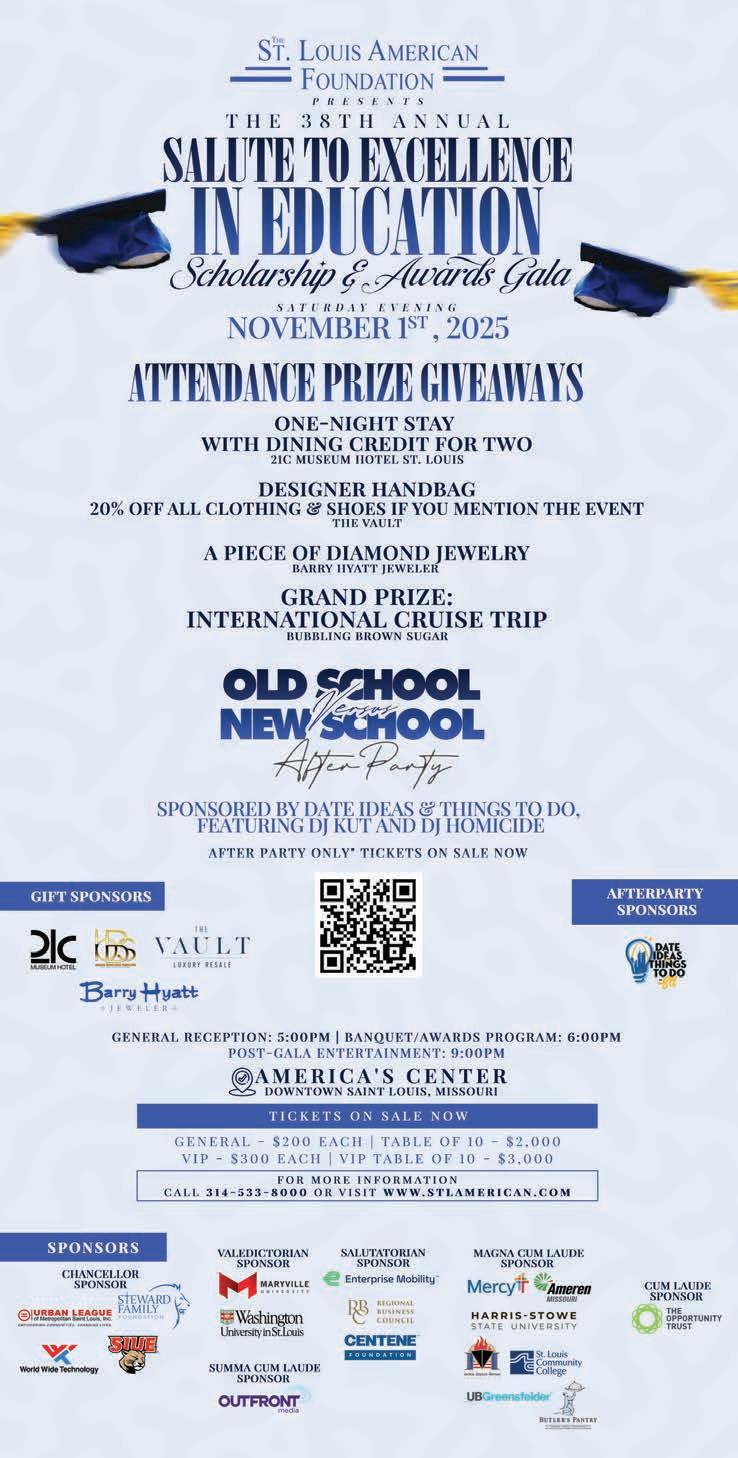

but it perfectly sums up what I was going through. If any of those children had hit me with a “yes ma’am,” I would have crashed out, but understood. Enough about my feelings, let’s get on with Playboi and ‘nem’s show. It’s been days since the show and my ears are still ringing. I can’t even hear myself type! That show was loud — like, “I think I saw sound” loud. And I’m pretty sure the bass rearranged my internal organs. Remember how our dogs would be barking by the time we walked from our cars to the concert because we would try
to be cute? Well, this wasn’t that! There were no heels, no designer flexing — just black layers, sneakers and vibes. Folks knew what was up. You clearly don’t come to a Carti show to look cute; you come to survive. And the way the mosh pits were moshing, I was terrified that some of them wouldn’t make it! It was all love, but I was a nervous wreck! No one was the wiser, because I kept it cute. But my mind was racing. “Baby, don’t do it!” “Think about your tibia, your fibula and clavicle, chile!” and “Is he okay? Thank you Jesus.” Those phrases were on repeat – and I had the nine and the one dialed on my phone. I was shook! Mainly because I’m not used to seeing us engage in that type of concert shenanigans.


Join AARP in St. Louis for Trail Trekkers Veterans Hike & Food Drive Saturday, November 8 at Jefferson Barracks Park – Gold Star Shelter.
Hikers will explore the two trails in the park, along the Mississippi River for 2.7-mile hike through Jefferson Barracks Park.
AARP will be accepting non-perishable food and household donations for Forces for Food Pantry, which serves active, reserve and veteran members of all military branches and their families.
Donation Drop Off
Saturday, November 8, 2025 | 9 a.m. – 11 a.m.
Jefferson Barracks Park – Gold Star Shelt
To register for the hike and learn more about the food drive, visit aarp.org/stlouis


Through Oct. 30, 5 p.m. Boo at the Zoo Presented by SSM Health Cardinal Glennon, St. Louis Zoo, 1 Government Dr. St. Louis, MO 63110. For more information, visit https://stlzoo.org.
Fri., Oct. 31, 6 p.m. doors, Michael Jackson’s Thriller Live: A Halloween Special Tribute Presented By PureSoul, City Winery St. Louis, 3730 Foundry Way, St. Louis, MO 63110. For more information, visit https://citywinery.com.
Sun., Nov. 2, (5 p.m. doors)
Second Sunday Presents Saint and Sinners: Costume Party with sounds from Uncle Craig, TreHitz and Naybahood, The Sovereign, 3306 Washington Ave, St. Louis, MO. For more information, visit https://oldrockhouse.com.
Sat., Nov. 16, 7 p.m. The Boy Is Mine Tour with Brandy and Monica with special guest Kelly Rowland and Muni Long, Enterprise Center, 1401 Clark Ave, St. Louis, MO 63103. For more information, visit www.enterprisecenter.com.
Mon., Nov 17, 6:30 p.m. doors, John Legend Get Lifted - 20th Anniversary, The Factory, 17105 N Outer 40 Road, Chesterfield, MO 63005. For more information visit, www.thefactorystl.com.
Sat., Nov. 22, 8 p.m. Sexyy Red & Friends Glorilla, G Herbo and more, Enterprise Center, 1401 Clark Ave, St. Louis, MO 63103. For more information,
visit www.enterprisecenter.com.
Fri., Oct. 31, 7 p.m. doors. Zac Fox Live DJ Set, The Pageant, 6161 Delmar Blvd. St. Louis, MO 63112. For more information, visit www.thepageant.com.
Sat., Sat., Nov. 1, 6 p.m. (5 p.m. reception) The St. Louis American Foundation presents the 38th Annual Salute to Excellence in Education Scholarship and Awards Gala, America’s Center. For more information, visit www.stlamerican.com.
Sat., Nov. 1, doors 6 p.m. Boozy Bingo, City Winery St. Louis, 3730 Foundry Way, 3730 Foundry Way, St. Louis, MO 63110. For more information, visit https://citywinery.com.
Sun., Nov. 2, 6 p.m. Saint Louis Black Fashion Week Runway Show, Palladium, 1400 Park Pl, St. Louis, MO 63104. For more information, visit https://posh.vip.
Sun., Nov. 30, 7 p.m. R&B Bowling After Dark, Tropicana Lanes, 7960 Clayton Rd, Richmond Heights, MO 63117. Purchase tickets here, www. eventbrite.com.
Sun., Nov. 9, 7 p.m. Special Event: Darren Brand, Helium Comedy Club, 11151 St. Louis Galleria Street, St. Louis, MO 63117. For more information, visit https://st-louis. heliumcomedy.com.
Fri., Nov. 14 - 16, Special Event: Bill Bellamy, Helium

Comedy Club, 11151 St. Louis Galleria Street, St. Louis, MO 63117. For more information, visit https://st-louis. heliumcomedy.com.
Fri., Nov. 28 – Sun., Nov. 30, St. Louis’ own Lavell Crawford, Helium Comedy Club, 11151 St. Louis Galleria Street, St. Louis, MO 63117. For more information, visit https:// st-louis.heliumcomedy.com.
ST. LOUIS MUSIC SPOTLIGHT
Fri., Nov. 21, 8 p.m. (7 p.m. doors) Through The Fire: A Chaka Khan Tribute featuring
Cherise Louis Mason and Tish Period, Live By Loews, 799 Clark Avenue.
Through Dec. 31, 11 a.m. Jazz Sunday, Beatnik Bob’s in City Museum, 750 N. 16 St. St. Louis, MO 63103. For more information, visit https://citymuseum.org.
THEATRE
Through Nov. 2, I Have Been Here Before by J.B. Priestley, Kranzberg Black Box Theatre, 501 N. Grand Blvd, St. Louis, MO 63103. For more information visit, https://albiontheatrestl.org.
Nov. 15- Nov. 16, Robert Townsend: Living The Shuffle, Kirkwood Performing Arts Center, 210 E. Monroe Avenue, 63122. For more information, visit www.metrotix.com or call 314.534.1111.
Through November 16, The Repertory Theatre of St. Louis presents The Brothers Size, Emerson Studio Theatre, 130 Edgar Rd. Webster Groves, MO 63119. Matinee showtimes available. For more information, visit www.repstl.org.
Nov. 25- Dec. 7, The Fabulous Fox presents The Wiz. The Fabulous Fox. For more information, visit https://www.fabulousfox.com/
ART
Through February 1, 2026, Jennie C. Jones: A Line When Broken Begins Again, Pulitzer Arts Foundation and Museum, 3716 Washington Blvd, St. Louis, MO 63108. For more information, visit https://pulitzerarts.org.
Through February 8, 2026, Teresa Baker: Somewhere Between Earth and Sky, Contemporary Art Museum, 3750 Washington Blvd, St. Louis, MO 63108. For more information visit, https://camstl.org.
Through June 2026, The Future Is Female, 21c Hotel and Museum Hotel St. Louis, 1528 Locust St, St. Louis, MO 63103. For more information, visit https://21cmuseumhotels.com.


Nov 15–16


(POSITIONS ARE IN ST. LOUIS, MO)
MULTIPLE POSITIONS
Technical Managers, Computer Support Engineers, Senior Data Analysts, Support Engineers, Software Engineers, Software Test Engineers, Sr. Database Administrators, Software Quality Assurance Testers, Software Developers, Implementation Engineers, UX Designers, IT Project Managers, QA Test Analysts, Database Analysts, Jr. Systems Administrators, Application Engineers, Data Testers, Business Analysts, Business Systems Analysts, Business Operations Analysts, Solution Architects, Software Quality Assurance Engineers. Multiple positions. Mail resume to: Infinite Computer Solutions, Inc., Attn: HRGC, 2600 Tower Oaks Blvd, Ste. 700, Rockville, MD 20852.
The Missouri Historical Society is seeking a graphic designer to lay out the book and design the cover for a book on St. Louis history to accompany our “I Am St. Louis” campaign. For more details please contact, Lauren Mitchell, Director of Publications, Lmitchell@mohistory.org. Submission deadline: November 3, 2025
An Equal Opportunity/ Affirmative Action Employer
Services Provided On A Non-Discriminatory Basis
Sealed bids for the Greenwood Blvd. Bridge No. 424 or Greenwood Blvd Bridge No. 424 & Pacific Avenue Bridge No. 428 over Big Bend Blvd. Project, St. Louis County Project No. AR-1670 will be received electronically thru the County’s Vendor Self Service portal at https:// stlouiscountymoven dors.munisselfservice. com/Vendors/default. aspx, until 2:00 PM on December 17, 2025. Plans and specifications will be available on October 27, 2025 from the St. Louis County Web Site (www.stlouiscounty mo.gov) or by contacting Cross Rhodes Print & Technologies, 2731 South Jefferson Avenue, St. Louis, MO 63118 (314) 678-0087.
DIRECTOR OF PROCUREMENT
ST. LOUIS COUNTY
Pattonville Fire Protection District is accepting applications for a FIREMEDIC position. Must meet minimum qualifications, please see website www.pattonvillefd.com for details. Applications can be obtained from our website or picked up at the Fire District Administration Building; 13900 St. Charles Rock Road, Bridgeton, Missouri, 63044; from 8:00 A.M. to 4:00 P.M., Wednesday, October 22nd, 2025, through Wednesday, November 5th, 2025.
Accepting Letters of Interest from November 3 –November 21, from qualified organizations with experience providing behavioral health and prevention services for St. Louis city residents. Some organizations will be invited to submit a full application due in January 2026, which may result in financial support. Details available at www.stlmhb.org
Notice is hereby given that the Metropolitan St. Louis Sewer District Requests for Quotes, Bids and Proposals are posted online for public download. Please navigate to www.msdprojectclear.org > Doing Business With Us > View Bid Opportunities
Metropolitan St. Louis Sewer District is an Equal Opportunity Employer.
Great Rivers Greenway is requesting Bids : Guardrail repair, pedestrian gate and fence installation. Go to www.greatrivers greenway.org/bids and submit by November 18, 2025.
Bids for Replace Heat Pumps, Project No. E232801 at EW Thompson State School in Sedalia, Missouri will be received by FMDC, State of MO, UNTIL 1:30 PM, December 2, 2025. Project information available at: http://oa.mo. gov/facilities
Bids for Replace Heat Pumps, Project No. E234101 B.W. Robinson State School, Rolla, Missouri will be received by FMDC, State of MO, UNTIL 1:30 PM, December 4, 2025. Project information available at: http://oa.mo. gov/facilities
Bids for Group Home Study & ADA Improvements, Project No. M2319-01 at Bellefontaine Habilitation Center 10695 Bellefontaine Road, St. Louis, Missouri will be received by FMDC, State of MO, UNTIL 1:30 PM, November 20, 2025. Project information available at: http://oa.mo. gov/facilities
Bids for Renovate 4 Client Bathrooms, Ragland Education Building, Project No. M2406-01 will be received by FMDC, State of MO, UNTIL 1:30 PM, December 9, 2025. Project information available at: http://oa.mo. gov/facilities
Date of First Publication: 10/30/25
City of St. Louis: Community Development Administration (CDA) 1520 Market Street, Suite 2000 St. Louis, Missouri 63103 314-657-3700 / 314-589-6000 (TTY)
On or after 11/7/25, the City of St. Louis (“the City”) will submit a request to the U.S. Dept. of Housing & Urban Development (HUD) for the release of the following Community Development Block Grant – Disaster Recovery (CDBG-DR) funds, under the Continuing Appropriations Act of 2023, PL117-180, to undertake the following program comprising part of the City’s Action Plan for Community Development Block Grant -Disaster Recovery Funds, within the City:
Home Repair Program Loan Pool, under CDBG-DR funds [Award # B-23MN-29-0001] with an estimated total of $7,833,902.00, for the purpose of assisting low- to moderate-income homeowners as a result of damages incurred during the July 2022 flood, through approximately 52 grants, at locations to be determined;
The activities proposed are categorically excluded under HUD regulations at 24 CFR Part 58 from National Environmental Policy Act (NEPA) requirements. An Environmental Review Record (ERR) that documents the environmental determinations for these projects is on file at the City’s CDA, at the address listed above, and may be examined or copied, by appointment, weekdays 8 A.M to 4 P.M, or visit https://cpd.hud. gov/cpd-public/environmental-reviews to review the HUD ERR.
Any individual, group, or agency may submit written comments on the ERR to Trey McCarter, CDA, Community Development Planner III, at the address listed above. All comments received by 4 p.m. on 11/6/2025 will be considered by the City prior to authorizing submission of a request for release of funds.
The City certifies to HUD that, Nahuel Fefer, in his capacity as Executive Director, consents to accept the jurisdiction of the Federal Courts if an action is brought to enforce responsibilities in relation to the environmental review process and that these responsibilities have been satisfied. HUD’s approval of the certification satisfies its responsibilities under NEPA and related laws and authorities and allows the City to use the City’s abovereferenced HUD program funds.
HUD will accept objections to its release of funds and the City’s certification for a period of 15 days following the anticipated submission date or its actual receipt of the request (whichever is later) only if they are on one of the following bases: a) the certification was not executed by the Certifying Officer of the City; b) the City has omitted a step or failed to make a decision or finding required by HUD regulations at 24 CFR Part 58; c) the grant recipient or other participants in the development process have committed funds, incurred costs or undertaken activities not authorized by 24 CFR Part 58 before approval of a release of funds by HUD/State; or d) another Federal agency acting pursuant to 40 CFR Part 1504 has submitted a written finding that the project is unsatisfactory from the standpoint of environmental quality. Objections must be prepared and submitted in accordance with the required procedures (24 CFR Part 58.76) and shall be addressed to the HUD St. Louis Field Office, CPDRROFSTL@hud.gov. Potential objectors should contact HUD to verify the actual last day of the objection period.
Nahuel Fefer, CDA Executive Director Certifying Officer



River City Construction, LLC is the Construction Manager at Risk for the Missouri S&T Bioplex project. The project consists of approximately 105,000 sf of new building, site work and landscaping, and will be connected to the existing Bertelsmeyer Hall via a connector bridge. The building will consist of a vivarium, laboratory space, offices, and classrooms. The Bioplex will be the final piece to complete Missouri S&T’s master planned arrival court.
The University of Missouri S&T / River City Construction, LLC as the Construction Manager, is accepting bids for the Work Categories noted below on November 12th, 2025 at 1:30PM submitted to the University of Missouri online bidding platform, e-builder, and in person at Missouri University of Science & Technology, Design and Construction Management, General Services Building, 1701 Spruce Dr., Rolla, MO 65409:
• 03.3 – Concrete Foundations
• 14.3 – Machine Roomless Electric Traction Elevator
• 31.3 – Drilled Piers (Drilling Only)
Additionally, River City Construction, LLC is pursuing the work categories below as a General Contractor and will be receiving bids from applicable subcontractors and suppliers on November 10th, 2025, at 1:30PM (48 hours before all other bids are due for this bid package). Bids should be submitted to the email addresses noted by each bid package below.
• 03.3 – Concrete Foundations (Justin Beaty, jbeaty@rccllc.com)
Bid documents can be obtained by visiting our website at: https://www.rccllc.com/smart-bid/. The link to the project will be located under the link: River City – Peoria River City Construction, LLC is an Equal Opportunity Employer.
Operation Food Search sponsors the Child and Adult Care Food Program (CACFP) and is soliciting bids from food service vendors. CACFP provides meals to children attending after school activity programs in low-income neighborhoods. The program is intended to provide a nutritionally balanced meal to children. All meals served must meet the United States Department of Agriculture (USDA) pattern requirements and Operation Food Search’s established menus.
Bids are being solicited for service in the St. Louis region for approximately 82,620 meals served annually. The contract period will run from December 1, 2025– September 30, 2026. There will be a break in service during the summer months when the Summer Food Service Program (SFSP) is available. All contracts are subject to review by the Missouri Department of Health and Senior Services Bureau of Community Food and Nutrition Services. To obtain a bid packet, contact Amanda Noelker at Operation Food Search, 1644 Lotsie Blvd., St Louis MO 63132, or Amanda. Noelker@operationfoodsearch.org or at (314) 325-1308
The deadline for bid submission is November 7th, 2025 at 10:00 a.m. A public bid opening will be at 2:00 p.m. on November 7th, 2025 at 1644 Lotsie Blvd., St Louis MO 63132.
USDA is an equal opportunity provider and employer.
Bids for Replace Siding & Roof of Multipurpose & Dormitory Buildings, Camp Avery Park, Project No. H2402-01 will be received by FMDC, State of MO, UNTIL 1:30 PM, November 18, 2025. Project information available at: http://oa.mo. gov/facilities
Bids for New Director’s House, Missouri State Fairgrounds Project No. F2402-01 will be received by FMDC, State of MO, UNTIL 1:30 PM, November 4, 2025. Project information available at: http://oa.mo. gov/facilities
Bids for Replace Roofs & Tuckpoint Exterior Masonry at Farmington Correctional Center, Project No. C2504-01, will be received by FMDC, State of MO, UNTIL 1:30 PM, November 13, 2025. Project information available at: http://oa.mo. gov/facilities
Bids for Replace Carpet and Paint, Suite 670 Revenue, Project No. O2421-01 will be received by FMDC, State of MO, UNTIL 1:30 PM, October 28, 2025 Project information available at: http:// oa.mo.gov/ facilities
Bids for Replace Roof, Hospital Building, Confederate Memorial State Historic Site, Higginsville, Missouri, Project No.X2405-01 will be received by FMDC, State of MO, UNTIL 1:30 PM, November 13, 2025. Project information available at: http://oa.mo. gov/facilities
Sealed proposals for Food Service Management will be received at Epworth
Children & Family Services, Inc., 110 N. Elm Ave. St. Louis, Mo. 63119 until 9:00 am on Saturday, January 31st, 2026 and then publicly opened. To receive copies of November 1st, 2025, RFP or for more information contact Kimberly Mims at (314) 918-3400.
Sealed bids for the West Florissant Avenue (A) Resurfacing project, St. Louis County Project No. AR-1827, Federal Project No. STP-4901(647) will be received electronically thru the County’s Vendor Self Service portal at https://stlouiscountymov endors.munisselfservice. com/Vendors/default. aspx, until 2:00 PM on November 19, 2025
Plans and specifications will be available on October 20, 2025 from the St. Louis County Web Site (www.stlouiscounty mo.gov) or by contacting Cross Rhodes Print & Technologies, 2731 South Jefferson Avenue, St. Louis, MO 63118 (314) 678-0087.
DIRECTOR OF PROCUREMENT ST. LOUIS COUNTY
City of Pine Lawn Seeking Sealed Bids to be opened at Pine Lawn City Hall 5:30pmThursdayNovember 20, 2025 for:
1. Construction of 2 Bathrooms in Pelton-Jackson City Park
2. Roofing to Cover Snow Salt Bin
3. IT Company to Provide Integrated Technology Services Contact Pine Lawn City Hall at 314-261-5500 (press 1) or at 6250 Steve Marre Ave. (zip 63121) for availability of bid specifications

By Rev. Dr. Anthony L. Riley
St. Louis is no stranger to shaking ground — literally and figuratively.
We live on the New Madrid and Wabash Valley seismic zones, fault lines that remind us that life gets shaken at unexpected times. Add to that the tremors of gun violence, poverty, eviction and a mental health crisis, and you don’t have to wait for an earthquake to feel the ground move. And yet, Psalm 46 declares: “God is our refuge and strength, a very present help in trouble.”
There are days when our city feels weary: Another child lost to gunfire, another hospital closure, another small business pushed out by rising rents, another Black family struggling to rebuild after a storm.
The good news is that while life is fickle, God is faithful. God is. Not “was,” not “will be.” God is constant. Presidents were, but God is. Mayors were,
but God is. Empires rise and fall, but God is. We celebrate strong men, strong women and strong machines. But God is stronger — stronger than the earthquakes that shake our foundations, stronger than tornadoes that tear through our neighborhoods and stronger than systems that try to break our spirits.
In St. Louis, we’ve seen storms take roofs, pandemics take lives and policies take hope. But our ancestors taught us how to stand when the world shakes. They showed us how to build again and how to believe again. Scripture reminds us: “The nations are in an uproar, the kingdoms totter; but God utters His voice — the earth melts.” Empires have come and gone — Assyria, Babylon, Rome. And yet the same God who outlasted them still sustains us. That sustenance endures through political division, cultural decay and the weight of racial inequity. We are called to remember that our

hope doesn’t come from City Hall or Capitol Hill. It comes from the hill called Calvary.
When you see God’s strength at work, say something. Say something when a teacher holds on for one more semester. Say something when a grandmother raises another generation. Say something when a community cleans up its own block — say something.
“Come, behold the works of the Lord,” the Psalmist says. If you’ve seen God’s hand, tell it. St. Louis needs to hear it. St. Louis needs to see the light, even in dark times.
In a time when noise is everywhere — protests, politics and posts — sometimes the most
radical act is to be still. To pause. To breathe. To remember that the rock doesn’t move. The rock is Jesus. So, when the next storm comes — financial, emotional or literal — say, “God is stronger.” Say it with conviction, with your chest. God is stronger than your diagnosis, stronger than your debt and stronger than your despair. A mighty fortress is our God. And St. Louis, that means we still have reason to hope. Selah.
The Rev. Dr. Anthony L. Riley is senior pastor of the historic Central Baptist Church of St. Louis — the second oldest Black church in St. Louis.
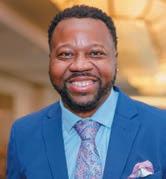
One of the hardest truths in leadership is this: the better you are at developing people, the more likely they are to leave you.
I’ve lived this reality more than once.

Talented people I’ve mentored have walked away from stable roles with good pay. Not because they were unhappy, but because they felt called to something deeper. At first, I saw that as a loss. Over time, I realized it was actually a win. The mark of strong leadership isn’t just retaining people — it’s releasing them well.
I remember sitting across from a talented leader when I was at United Way — someone I had invested in for years. When she told me she was leaving, my first reaction was disappointment. I tried to convince her to stay. But I realized I wasn’t serving her — I was serving my own fear of losing her. That moment taught me something: leadership isn’t about holding on tighter, it’s about letting go better. She wasn’t running from something — she was running toward something. And I had to decide whether to cling or to bless. That experience shaped how I view talent transitions. When someone on your team decides to move on, it’s rarely just about one thing. The challenge for leaders is knowing how to respond.
Here are three principles that have guided me:
• Purpose before Paycheck. Money matters, but meaning matters more. If someone is being drawn toward purpose, don’t try to retain them just to serve your organization.
• Growth before Grasping. Don’t see departures as failures. If you’ve grown people to the point where they are being noticed and recruited, that’s a reflection of your leadership.
• Vision before Vacancy. When someone leaves, ask, “What do I really need in this next season?” Sometimes it’s a like-for-like replacement. Other times, it’s a
chance to reshape the role.
This isn’t just about leaders. If you’re the one feeling pulled toward something deeper, don’t ignore it. It may feel risky to leave stability, but growth often requires stepping into the unknown. The real danger isn’t leaving too soon — it’s staying too long in a role that no longer stretches you. Too often, people stay because of fear — fear of letting others down, disappointing a leader, or losing financial stability. But your growth isn’t disloyalty; it’s stewardship of your gifts. Comfort zones are rarely growth zones.
So how do we live this out in practice?
For leaders:
• Ask, “What’s pulling you?” not just “Why are you leaving?”
• Celebrate people’s contributions publicly before they go.
• Build succession into your culture so departures don’t create panic.
For professionals in transition:
• Write down the purpose behind your move so you’re clear on the “why.”
• Leave well. Finish strong, express gratitude, and protect relationships.
• Step boldly. Clarity often comes after the move, not before it.
Scripture reminds us in Proverbs 19:21:
“Many are the plans in a person’s heart, but it is the Lord’s purpose that prevails.” People and organizations will plan, but purpose will always have the final word. Our job as leaders — and as professionals — is to listen for it and align ourselves with it.
So here’s the maturity test for leaders: will you create a culture where people can outgrow you — and celebrate them when they do?
And here’s the courage test for professionals: will you trust that your gifts are meant for more, even if it means stepping out of the safe and into the uncertain?
There’s a ripple effect of leadership done well. You may lose a person in the short term, but you gain an ally in the long term. And you multiply your impact in ways you may never fully see. So whether you’re leading people or deciding on your next move, remember this: purpose is bigger than position. Will

On November 1st, we will celebrate the 38th anniversary of the St. Louis American Foundation’s Salute to Excellence in Education. Each year this program celebrates a diverse group of individual achievers who have made a difference in our community. Initially, the program targeted its net proceeds to a variety of community charities.
The Foundation was formed in 1994 and received its 501(c)(3) nonprofit status soon after. We sharpened our focus to enhance educational opportunities for individuals and to recognize talented and dedicated educators. Over the years, the community has embraced our efforts and has supported our mission. We developed partnerships with local universities and they have responded by providing Donald M. Suggs Scholarships for deserving students.
Including proceeds from this year’s event and the tremendous partnerships we have with universities in our area, over $19 million in scholarships has been provided to high-achieving students with financial
needs. We expect these grants to exceed $2 million.
In this politically sensitive moment, it is more important now than ever to invest in tomorrow’s leaders. Funds are being cut, and universities are having a difficult time navigating some of the restrictions as well as current pushback on programs that target the people who need them the most. While navigating these changing requirements can be difficult, we cannot take our eye off the fact that we are here to help these individuals who desperately need our assistance. While many programs may look different for the next few years as we deal with the political realities of our time, we believe most people will come to understand that we cannot abandon those with the potential to contribute so much to our society.

gives us an opportunity to recognize those who have dedicated their lives for years to enhancing the development of our youth. As we approach the event, each week the St. Louis American has been — and will continue — to highlight them. They have been dedicated and impactful in increasing the quality of education for our young people.
University and Webster University. While we expect everyone to have a great time at our 38th celebration, we have a heightened awareness of the importance of the work that we are doing. We fully expect to navigate the current distractions and limitations of the current environment. We look for others who care about the future of people in need, to join us in ensuring the next generation of students are able to get the education they need to make a difference in our communities.
Importantly, this annual event also
We are grateful to Errin Braddock and Mark Stallion for agreeing to co-chair this year’s gala. In addition to our own scholarships, we are thankful and most appreciative of the scholarships provided by HarrisStowe State University, Maryville University, Southern Illinois University Edwardsville, St. Louis Community College, Goldfarb School of Nursing, University of Missouri St. Louis, Washington University, St. Louis
I want to thank Raven Whitener, our Foundation Director for her dedication and hard work to make sure this event goes well. Additionally, I want to thank the entire staff of the St. Louis American for their support of this year’s event. Finally, I want to thank you, our community, for without your support, we would not be able to help so many young people as they work to improve the outcome of their lives, families and communities. I look forward to seeing you on Saturday, November 1st.
Michael R. Holmes Board Chairman St Louis American Foundation
Co-chairs


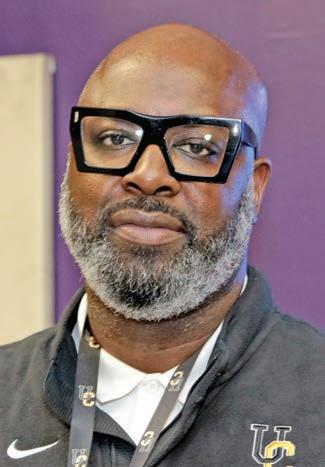


By Raven Whitener St. Louis American Foundation
For 38 years, The St. Louis American Foundation has partnered with universities across the region to provide college scholarships for high-achieving and first-generation students. The annual Salute to
Excellence in Education Gala highlights the contributions of educators and the students they inspire.
The event brings together educators, community leaders and families to honor those advancing academic success in the St. Louis region. Since its inception, the program has supported thousands of students through the
scholarships and institutional partnerships aimed at expanding educational opportunities.
Now approaching its fourth decade, the Salute continues to recognize the achievements of teachers and students whose work and commitment strengthen the community’s educational foundation.
The educators recognized this year
are Dr. Flint W. Fowler, Lifetime Achiever Award; Mary Elizabeth Grimes, Stellar Performer; Maxine Clark and Bob Fox, Champions in Education; and Dr. Rhonda Key, Tamara Pendleton, Dr. Michael Peoples, Dr. Michael D. Triplett, and Erica Williams, all Excellence in Education honorees.

By Ashley Winters St. Louis American
For nearly three decades, Dr. Flint Fowler has been a steady force in shaping the lives of St. Louis youth — a mentor, advocate and builder of opportunity whose quiet leadership has changed the course of countless futures.
That impact will be formally recognized this year when Fowler receives the Salute to Excellence in Education Lifetime Achiever Award, presented by the St. Louis American Foundation. The honor reflects not just a career devoted to young people, but a lifetime rooted in service, family and faith.
Fowler’s passion for helping young people succeed has long inspired those around him. Under his leadership, the Boys & Girls Clubs of Greater St. Louis reached new heights, transforming lives through his commitment to cultivating greatness. He first took the helm in 1996, when the organization was still known as the Herbert Hoover Boys & Girls Club on North Grand Boulevard — a role that would define the next 28 years of his life’s work.
Fowler grew up at Goodfellow and Bartmer in what he fondly calls the “original West End,” a close-knit neighborhood filled with extended family. His father, a Navy veteran and steelworker, and his mother, a community organizer and artist, modeled service and perseverance. His mother’s work with the West End Community Conference — where she rose to executive director — showed him how grassroots leadership could change lives.
Faith and family were the foundation. Sundays meant church at Pleasant Green Missionary Baptist, once a synagogue before “white flight” reshaped the neighborhood. “I wanted to be on the Usher Board so bad,” Fowler recalled with a laugh. “I thought it was so cool.”
Those early lessons in community and adaptability would guide him for the rest of his life.
Fowler joined the Cub Scouts at age

8 or 9, spending summers learning resilience in the woods. “It was purposely structured to get you out of your settings where you’re comfortable and to get you to develop some confidence in other places,” he said. “That was a tremendous lesson I learned — one I would need later down the road as an adult.”
At 22, fresh out of college, he turned that experience into his first full-time job
with the Boy Scouts of America Greater St. Louis Area Council, raising money, recruiting youth and finding volunteers. The role taught him how stewardship and teamwork build lasting impact. “If I were doing the right thing for those adult leaders,” he said, “they would know the right thing to do for the kids.”
A lifelong learner, Fowler went on to earn a bachelor’s degree in psychol-
ogy and Black studies and a master’s in psychology with an emphasis in minority mental health from Washington University, followed by a Ph.D. in Higher Education Administration from Saint Louis University.
Before joining the Boys & Girls Clubs, Fowler helped shape youth programs such as Upward Bound, Operation Teamwork and INROADS-St. Louis. Each initiative shared a central goal: helping young people see what’s possible early in life.
“I think oftentimes we wait too late in the process to let young people know what they’re capable of and what’s available to them,” he said. “The earlier you do that, the greater their chances of aligning with something that meets their needs, their values, their talent set.”
When he became president of the Boys & Girls Clubs in 1996, he brought that philosophy with him. Over 28 years, he guided the organization’s transformation from a single site into a network of 11 locations reaching nearly 14,000 youth annually. Under his leadership, the Clubs added programs in leadership, academic success, career readiness, arts and athletics — including Mentor St. Louis, Keystone Clubs, Diplomas to Degrees, Career Launch, Money Matters and even a free dental clinic.
He also steered key mergers with the Mathews-Dickey and Bethalto clubs, expanding access and strengthening funding across the region.
At the heart of his professional success is a strong family foundation. Fowler met his wife, June, in a Spanish class at Soldan High School. Years later, their paths crossed again at college parties where he’d track her down when Earth, Wind & Fire came on. “And we’re still dancing,” she said with a smile.
To June, her husband is “a man of joy.” Even in high school, he was voted “Friendliest Kid.” She jokingly calls him “Friendly Flint Fowler.” That warmth defined their home life. After becoming
See FOWLER, page 7

UB Greensfelder and Partner Mark Stallion are proud to support the St. Louis American Foundation in their mission to invest in promising students from under-resourced communities, opening doors to education and brighter futures. ubglaw.com
UB Greensfelder was created in 2024 through the merger of Ulmer & Berne LLP and Greensfelder, Hemker & Gale, P.C.— two strong, growth-focused firms that joined forces to create an Am Law 200 legal powerhouse.
Continued from page 5
empty nesters in 2009, they enjoyed several carefree years — until their 6-yearold great-niece needed a place to stay. “It’s not even a question — of course she can stay with us,” he told his wife. They’ve been raising her ever since.
Their three adult children — Jessica, Stacey and Evan — say their father’s lessons continue to shape them. “Never forget who you are or whose you are,” he told them when dropping them off at college. For Stacey, those words meant staying grounded in faith and purpose.
They remember the playful side, too. “He loves to sing and will just break out into long, high squeals at any given time,” Stacey said. Jessica added, “He truly wants to be a soprano.”
But the deeper lessons endured. “His entire life has been service to others,” Jessica said. “And it is a model I try to follow.”
That sense of service extends beyond his family. Jessica recalls her father visiting during her residency at Children’s Hospital of Philadelphia and asking if she knew the name of one of the cafeteria staff members — and whether she’d met the woman’s daughter who wanted to study medicine. “Go and connect. Go and support,” was the message she heard in his gentle question.
“He’s found a way to be such a great father not only to us but to so many in our circle,” Stacey said. “I love sharing him with whoever needs him.”
Evan agrees: “He set an encouraging example of how to persevere, how to lead and how to serve others.”
During his tenure, Fowler often encouraged teens to think beyond themselves. One story that still fills him with pride came during the Flint, Michigan, water crisis. When Club members organized a bottled-water drive, they decided not only to collect donations but to personally deliver them to their peers at the Flint Boys & Girls Club. “They wanted to show them that St. Louis had their back,” Fowler said.
That same spirit surfaced again during the Ferguson uprising, when teens organized memorials for Michael Brown Jr. and created a call to action that led to a new teen center in Ferguson — a safe space for reflection and leadership.
His friend and fraternity brother Michael Holmes, chairman of the St.

After nearly three decades of service, Dr. Flint Fowler retired in 2024, leaving an organization and a city stronger for his leadership. Over the years, the Boys & Girls Clubs of Greater St. Louis has provided scholarships, mentorship and safe spaces for tens of thousands of children.
Louis American Foundation Board, said Fowler’s influence reaches far beyond his formal titles. “Flint has always demonstrated a desire to help young people develop to their full potential,” Holmes said. “When Flint does something, you know it has been well thought out, and its execution will be flawless.”
After nearly three decades of service, Fowler retired in 2024, leaving an organization and a city stronger from his leadership. Over the years, the Boys & Girls Clubs of Greater St. Louis has provided scholarships, mentorship and safe spaces for tens of thousands of children
— many of whom still reach out to share their success stories.
Among them is Deonte Brown, who joined the Club at age 6, later earned a veterinary degree from Purdue University and returned to donate $10,000 to the organization that helped shape him. His story, Fowler said, embodies the purpose behind his life’s work.
“When someone asks me to reflect on my life, I get a chance to say, Wow, maybe I did make a difference,” Fowler said. “Somehow, I set a model to put the right opportunities or tools in place for young people — the right programs, the
right services and the right people they could connect with. It’s pretty gratifying to know that I contributed to someone’s well-being.”
Dr. Flint Fowler remains a steadfast believer in possibility — a mentor whose quiet faith and joyful leadership continue to ripple through the lives of those he has inspired. His story is not only about the programs he built, but about the people who carry his lessons forward: Lead with love, serve with purpose and always make room for someone else to shine.


By Ashley Winters
The St. Louis American
Mary Elizabeth Grimes has spent her career helping young women see their potential — and this year, that lifelong mission is being honored.
The president of Marian Middle School will receive the Salute to Excellence in Education Stellar Award, presented by the St. Louis American Foundation to educators and community leaders who make a lasting impact on students.

“It’s an honor to carry the mantle — it’s God’s work,” Grimes said.
As president of Marian since 2014, Grimes leads more than 200 students from fifth grade through post-secondary education, ensuring they have the support to finish high school, succeed in college and prepare for meaningful careers. The faith-based school serves girls from underserved communities and provides long-term mentoring well beyond eighth grade.
“At Marian specifically, we are here to pour into them those things that are purposeful and to help them understand and embrace who God created them to be,” she said.
Grimes said her late mother — a teacher who believed every child deserves the chance to learn — remains her guiding inspiration. “At this moment, I’m holding back tears,” she said. “She was an educator who believed all children should have the opportunity to learn.”
Her sister, Sheila Williams, a longtime educator, said Grimes’ influence extends well beyond Marian’s halls. Years ago, after Williams felt betrayed by a colleague and withdrew from school activities, her sister challenged her to reconsider. “Mary asked whether, by stepping

back, I had put my own hurt feelings ahead of my commitment to serving children,” Williams recalled. “Her question struck a chord. It was typical Mary Elizabeth Grimes.”
“Mary’s greatest legacy is the example she sets for the Marian Girls,” Williams said. “Her life is a testament to walking in faith and living according to one’s beliefs.”
That quiet determination has inspired generations. Olympic legend Jackie Joyner-Kersee credits Grimes as a men-
tor who helped shape the vision for the Jackie Joyner-Kersee Youth Center 25 years ago, when the project faced daunting obstacles.
“She was relentless,” Joyner-Kersee said. “Her legacy lives in the people — the girls who are doing amazing things.”
Grimes has also been a mentor to Khalia Collier, owner and general manager of the St. Louis Surge and vice president and chief of staff for basketball operations with the Dallas Mavericks. Collier said Grimes’ faith and warmth have been
a steady source of inspiration.
“She took me under her wings to be my very best,” Collier said. “She feels like community — she embodies it and encourages it. Mary Elizabeth is love.”
Before joining Marian, Grimes built a wide-ranging career revitalizing organizations and leading teams through transformation. She headed the Greater Missouri chapter of the March of Dimes, led Forward Vision Inc. and held leadership roles at BJC HealthCare, Fair St. Louis, the St. Louis Sports Commission and KMOV-TV. Earlier in her career, she worked in senior marketing and sales at MTV, HBO and CBS, gaining national experience she would later channel into her work for St. Louis youth.
Her achievements have brought numerous awards and speaking invitations, but Grimes measures success by the confidence she sees in her students. She describes middle school as a pivotal time when girls begin to question who they are and where they belong. At Marian, she connects those questions to lessons about history and purpose.
She often reminds students of the women whose shoulders they stand on — including Maya Angelou — and urges them to recognize the strength they carry forward. Through her leadership, Marian has become a place where girls “see themselves fully — worthy, capable and ready to thrive,” she says.
Grimes believes no one is defined by circumstance but by purpose. “Like compost, what once seemed broken or discarded becomes the rich soil that grows something strong, radiant and beautiful in you,” she said. “Your scars become a testimony, a roadmap, a reminder that even in the darkest moments, there is a way forward.”
That faith-filled perspective — rooted in resilience and love — guides her work and her life. For those who know her best, from family to students to community leaders, Mary Elizabeth Grimes is not just an educator but a steady force for transformation.
Enterprise Mobility™ is proud to sponsor the St. Louis American Foundation’s 38th Annual Salute to Excellence in Education Scholarship & Awards Gala. We celebrate tonight’s inspiring honorees and their meaningful impact on students and educators throughout the region.
Clark and Fox built success — and used it to build opportunity for others
By Sylvester Brown Jr. St. Louis American
For Maxine Clark and Bob Fox, success has never been measured only by profits or titles. It’s also measured by what they give back — and in how they use their success in business to increase opportunities for others.
They have touched the lives of scores of people across the St. Louis region through their contributions to numerous educational initiatives and their involvement in issues that intersect with education or expand pathways to success, including public health, immigration, social and racial equity, criminal justice reform and entrepreneurship.
In recognition of their decades of impactful work, the couple will receive the Champions in Education Award at the St. Louis American Foundation’s 38th Annual Salute to Excellence in Education gala in November.
But how did two individuals who epitomize personal success become so committed to improving the lives of people often overlooked and helping to unlock their potential?
For Clark and Fox, the philosophy was ingrained from childhood.
Clark’s mother, Anne Lerch Kasselman, worked for Eleanor Roosevelt in the 1940s as the First Lady pursued international diplomacy and other human rights work. Later, Kasselman and a few friends started a nonprofit for children with Down syndrome.
“My mother’s philosophy was that although we weren’t rich people, we always had more than someone else,” Clark said. “So, how do you find that ‘someone else’ and help lift them up? That was our family philosophy. That’s just how we lived our lives.”
Fox was influenced by his parents’ humble backgrounds.
“I was raised right here, in Clayton. My mother was from the Ozarks. My father was a Polish immigrant raised in the ghettos of Buffalo, New York. He had a 10th-grade education but became presi-
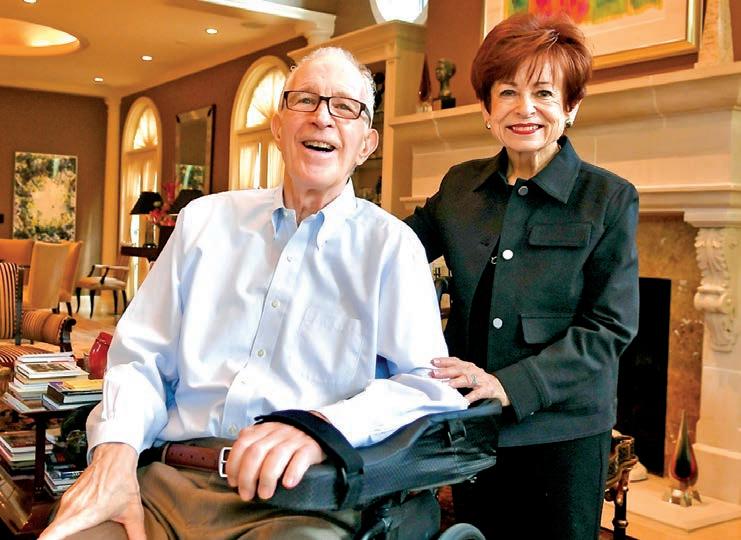
dent of the International Retail Shoe Co.
Although my father just worked, … my mother was always very charitable.”
Clark originally planned a career in law. She turned to retail to support that career. She worked in various department store divisions, including FamousBarr, Macy’s, Venture and Payless Shoe Source, where she eventually rose to the position of president. Her dream to become a civil rights attorney who “helped children, and families and persons of color,” were deterred, she explained in a 2021 interview with Early Learning Nation. She said she had become fascinated with her rising role in the retail business “because as a woman joining the workforce in the early 1970s, there was nothing for us.”
Clark originally planned to pursue a career in law, with the goal of becoming a civil rights attorney who “helped chil-
dren, and families and persons of color.”
To support that dream, she entered retail, working in various department store divisions, including at Famous Barr, Macy’s, Venture and Payless Shoe Source, where she eventually rose to the position of president.
In a 2021 interview with Early Learning Nation, she explained that her legal ambitions were derailed as she became fascinated with her fast-rising career in retail “because as a woman joining the workforce in the early 1970s, there was nothing for us.”
Fox, who served in the U.S. Air Force, founded NewSpace Inc., a company specializing in home organization, contract furniture and retail fixtures in 1984. In 1997, Clark launched Build-A-Bear from an office in Fox’s building.
Their personal lives eventually converged. In a 2021 interview with the St.
Louis Post-Dispatch, Fox said he was intrigued by “Clark’s fast-moving energy” though she initially dismissed him as “not her type.” They started dating and married in 1984.
By the time she stepped down as CEO of Build-A-Bear in 2013, there were nearly 500 Build-A-Bear stores worldwide. Fox sold NewSpace to his employees and an outside investor in 2017 after 33 years of successful operation.
In 2004, the couple launched the Clark-Fox Family Foundation. The nonprofit is dedicated to the growth and prosperity of the region through research and program development as well as investments in PK-12 and higher education, public health, immigration, social justice and racial equity, community leadership and entrepreneurship.”
Tina L. Klocke, Chief Financial and Administrative Officer with the Clark-Fox Family Foundation described the couple’s invaluable contributions.
“Maxine Clark and Bob Fox are two individuals whose impact on education and community innovation speaks volumes,” Klocke said. “Their work reflects a deep commitment not just to improving educational access, but to nurturing the potential of every learner.”
The foundation created “Blueprint4 Platforms,” web tools that connect families to learning resources for pre-college and college access programs and other academic and apprenticeship programs. Clark and Fox also are among the founding sponsors of Teach For America and KIPP charter schools in St. Louis. Fox founded and chaired Casa de Salud, a nonprofit health and wellness center serving new immigrants.
Charli A. Cooksey, founder and CEO of WEPOWER, credits much of her growth as a leader to their support.
“When Maxine and Bob truly believe in something, they go all in — and they truly believe in our region’s children and those doing work in service of them. They have consistently invested in my


LEADING BOLDLY, INCLUSIVELY AND WITH HEART.
At Webster University, diversity, equity and inclusion aren’t just part of our mission — they are at the heart of everything we do.
The Dr. Donald M. Suggs Scholarship at Webster University honors high-achieving students who have demonstrated a commitment to advancing diversity, equity and inclusion in their schools, neighborhoods and communities — a commitment they continue to live at the University and beyond.
At Webster University, we’re cultivating the next generation of leaders who understand that access, belonging and purpose change everything.


A single day in the classroom changed her life — and countless others’
By Alvin A. Reid St. Louis American
Dr. Rhonda M. Key never imagined her future would be decided by a single day in the classroom.
Fresh out of Lincoln University with a degree in biological science, she was preparing for medical school when a shortterm substitute teaching job changed everything.
“Then, I subbed as a science teacher, and I fell in love,” Key recalled. That unexpected spark led to a 37-year career in education — one that has taken her from the science lab to the superintendent’s office. Today, Key serves as deputy superintendent of the Hazelwood School District after decades in both classroom and administrative roles across urban, rural and suburban schools.

Her decades of leadership and student advocacy have earned her recognition as one of five Excellence in Education awardees at this year’s Salute to Excellence in Education Gala, sponsored by the St. Louis American Foundation. The event will be held Nov. 1 at America’s Center.
“I certainly didn’t expect this recognition. I am very excited and very humbled,” she said. “I am motivated to do what is best for children. When kids are successful, that’s when I find success.”
Key says her proudest accomplishments include helping boost graduation rates and preparing students for life after high school. She has built partnerships with businesses, universities and community groups to connect students with career pathways and hands-on learning experiences.
Dr. Tiffany Anderson, superintendent of Topeka Public Schools in Kansas and former Jennings superintendent, called Key “beyond exceptional.”

“She has high standards for excellence and inspires those around her to reach those standards,” Anderson said. “Her fearless leadership and advocacy for every student helped the districts she has served to improve significantly.”
Former Jennings teacher Miranda Ming remembers Key as the first administrator to regularly visit her classroom. Now an advisor to the executive director of Momentum Academy, Ming said Key became a mentor who “saw something in me.”
“If you give Dr. Key 99 reasons something won’t work, she will begin a relentless pursuit of the one reason it will,” Ming said.
Key’s leadership journey began early. While teaching at the Jefferson City Ninth Grade Center, her principal encouraged her to pursue graduate study and move into administration.
“My reaction was, ‘I don’t want to leave the kids,’” Key recalled. “He said not only would I still touch the lives of kids, I would touch the lives of adults.”
She went on to earn both a postgraduate degree and a master’s in education from her alma mater, Lincoln University. Key has since co-authored several works on urban education, including “The Path Less Traveled: Creating Authentic STEM Career Pathways by Removing Barriers for Underestimated Youth,”
written with Ming.
“You have to be willing to remove barriers. You have to adapt when you want to see your kids be successful,” Key said.
She reminds aspiring educators that the profession demands both empathy and accountability.
“They need role models to show them how to carry themselves, how to be professional,” Key said.
And it’s that same belief — in the transformative power of education — that continues to guide her after nearly four decades in the field.
“What other job gives you this satisfaction?” she said.
PARTNERS FOR BETTER EDUCATION:
WashU’s Institute for School Partnership provides over 5,000 local teachers with coaching, professional development and a kit-based science curriculum that brings innovative, hands-on STEM education to nearly 190,000 students, pre-K through 12th grade at 50+ school districts and 60+ independent schools in the region.
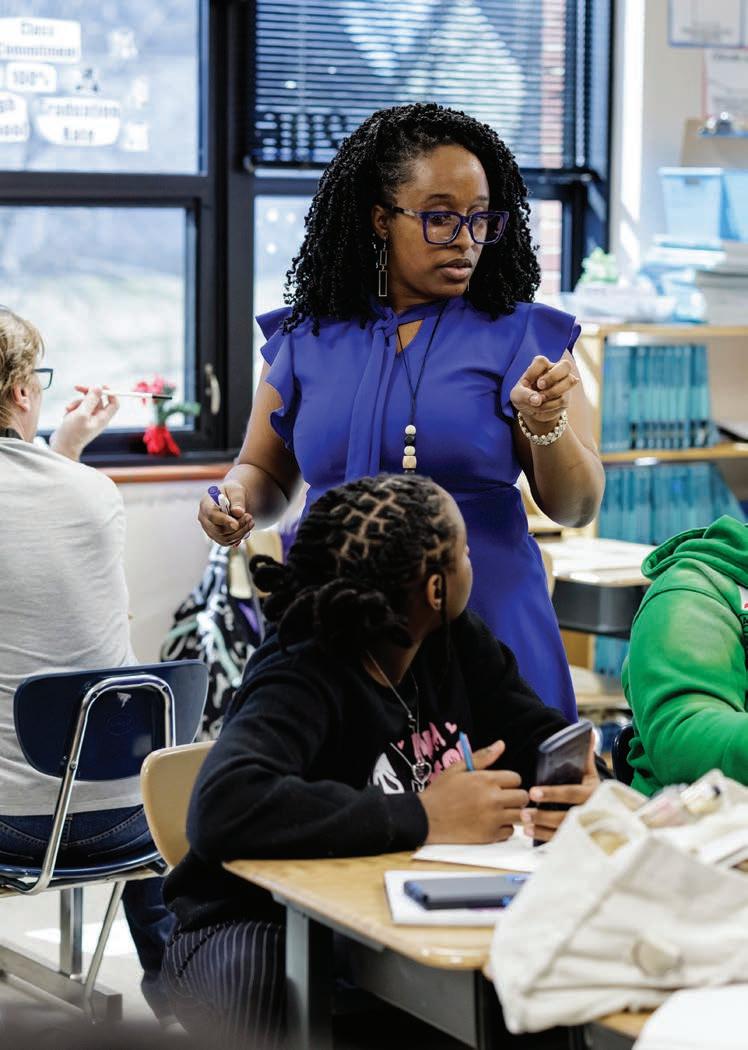
By Sylvester Brown Jr. St. Louis American
Tambra Pendleton has always believed education should do more than prepare students for college — it should teach them how to build a life.

As founding principal of BELIEVE Academy on Garrison Avenue, she leads an innovative charter high school where financial literacy, self-sufficiency and representation are woven into every lesson. The school opened this year, earning Pendleton recognition as one of five Excellence in Education Award recipients to be honored at the Salute to Excellence in Education Gala on Nov. 1, sponsored by the St. Louis American Foundation. Pendleton’s sense of service began on Chicago’s West Side, where her single mother, Lestene Norris, and her father both worked hard, ran small businesses and modeled generosity. Growing up in a bustling home full of siblings, adopted and biological alike, she learned responsibility early and developed a deep compassion for others.
“I think I learned a sense of selflessness from my mom, who was always providing for the needs of others,” Pendleton said. “Being the oldest and seeing my mother lean in and give so much where others may not, I probably unconsciously learned that I need to be a giver to others in their journeys and not leave anyone behind.”
That compassion defines her leadership.
“One of Tambra’s best qualities is that she identifies with the kids and families,” said Tenesia Simmons, executive director of Believe Middle College. “Sometimes parents or kids have anxiety and have trouble adjusting, and she’s able to get them to invest in ways that’s harder for others.”
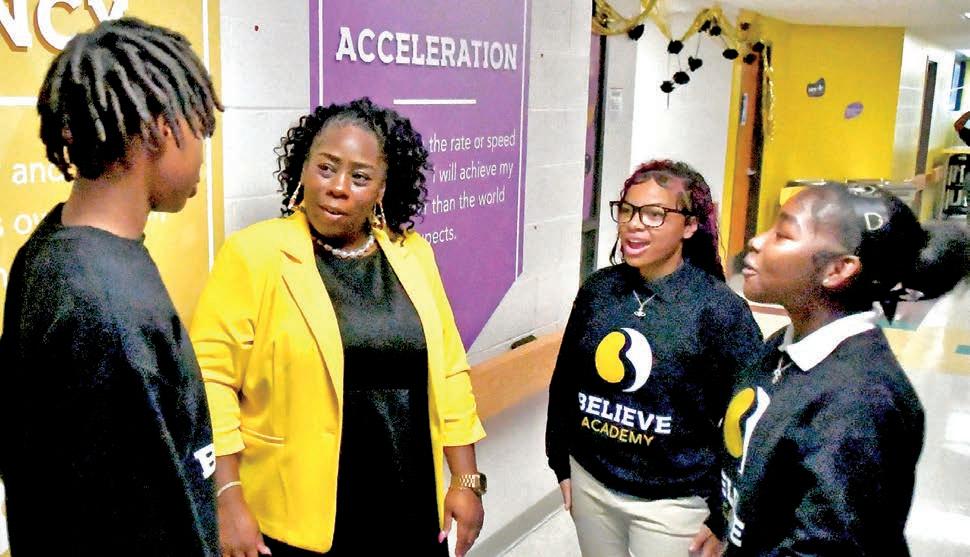
Pendleton initially planned to skip college and become an entrepreneur.
After improving her ACT scores, she enrolled at Southern Illinois University in Carbondale, where she built lifelong friendships and joined Delta Sigma Theta Sorority. Originally a business major, she shifted to education after her mother’s work with the Department of Family Services inspired her to understand “displaced children, how they are affected, what resources were available and the reunification process.”
Pendleton earned bachelor’s and master’s degrees in education from SIU. She began in early childhood education but soon moved to high school classrooms, joining Chicago’s Noble Schools network, where she became one of its top-performing biology teachers before moving into leadership.
Her search for new opportunities took her to New York, New Orleans, Washington, D.C., and eventually St. Louis, where she joined KIPP St. Louis
as Founding Dean of Culture, later advancing to Founding Assistant School Leader of Instruction.
Along the way, she helped launch BELIEVE Circle City in Indianapolis, founded to “develop students into leaders through a community that fosters their agency, autonomy and acceleration.”
BELIEVE Academy STL, which opened this fall with Pendleton as founding principal, builds on that model.
“It’s kind of like the law of attraction thing,” Pendleton said. “I think God works things out how they should be because the principles and foundation of BELIEVE is how I was raised, part of the hard work, sacrifice and doing for others that I saw my mother do for many years.”
BELIEVE’s curriculum emphasizes diversity, equity, inclusion and representation while teaching practical skills such as entrepreneurism, financial literacy, time management and problem-solving — lessons Pendleton believes will pre-
Tambra Pendleton interacts with students at BELIEVE Academy, an innovative charter high school she founded. The school weaves financial literacy, self-sufficiency and representation into every lesson.
pare students for any path they choose.
“Tambra proactively provokes her passions for young people to build sustainable pathways and ensure that those in our most vulnerable communities have the best resources and support so that they, too, can succeed,” said Colby Chapman, alderwoman in Harvey, Illinois, and Pendleton’s sorority sister.
Pendleton says her journey has come full circle — a reflection of the selflessness, nurturing and independence she learned at home. Her hope, she said, is that BELIEVE Academy continues to grow as a space where students not only learn but discover purpose.
“Eventually, as I get older,” she said, “I think I’ll always end up in education. No matter if I come into this building personally or not, I will always be a part of the BELIEVE Community.”
Sylvester Brown Jr. is the Deaconess Foundation Community Advocacy Fellow.



Congratulations to each of the award recipients!
Steward Family Foundation honors you and celebrates your commitment to academic excellence and leadership in education.


By Alvin A. Reid St. Louis American
Dr. Michael Peoples seemed to have his career path — and its many angles — covered as an accomplished engineer. He completed his pre-engineering studies then earned a bachelor’s degree in engineering management with a technology emphasis. After graduation, he held several engineering positions, including with Emerson Electric, IBM and General Motors.
Today, that same drive to excel has carried him far beyond engineering — into the classroom and district leadership, now serving as principal of University City High School. For his nontraditional path and record of student achievement, Peoples will be honored as one of five Excellence in Education awardees at the Salute to Excellence in Education Gala, sponsored by the St. Louis American Foundation.
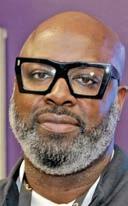
The event will be held Nov. 1 at America’s Center.
Though successful in corporate life, Peoples said he felt he should be on a different path. “I always knew internally that I had a different calling. I wanted to contribute more to society beyond simply making money,” he said.
He left the engineering world — and its higher salaries — in search of purpose. That search wasn’t easy. “Several people around me thought I lost my mind,” he recalled. “But I knew money alone was not enough.”
While coaching his son’s YMCA basketball team, Peoples had what he called his “first interaction with young, impressionable African American males,” sparking a passion for working with youth.
He soon found a foothold in education, joining the Special School District of St. Louis County as a math tutor.

Encouraged by teachers and staff, he earned his teaching certification and later taught mathematics at St. Louis Community College-Florissant Valley, Pattonville High School and Hazelwood East High School.
At Hazelwood East, he also directed summer school and served as a math instructional coach — experiences that inspired him to further his education. He went on to earn master’s degrees in teaching and school administration from Lindenwood University and a Ph.D. in educational leadership from Saint Louis University.
Peoples later rose through the Hazelwood School District’s ranks as assistant principal and associate principal before being named principal of University City High School in 2017. Today, he also serves as director of secondary education for University City Schools, overseeing middle, alternative and adult education programs, as well as instructional planning across the district.
Under his leadership, University City High has seen notable gains in graduation rates, academic performance and col-
lege acceptance. Students earned more than $2 million in scholarships from 65 colleges and universities following the 2024-25 school year.
Dr. Ian Buchanan, an engineer-turned-educator who once taught math in University City, said he relates to Peoples’ path and described the school’s progress under his leadership as “amazing.”
“Mike is receiving this award because of the incredible work he is doing, and it is measurable,” Buchanan said.
Peoples credits that success to the district’s strong leadership team, including Superintendent Sharonica L. HardinBartley, and to a shared vision that emphasizes excellence and equity.
He has also seen how learning itself has evolved. Teachers, he said, now act more as facilitators.
“The role of the teacher has changed,” he said. “We’ve found that students learn best by speaking and working with each other. There is more of a sense of agency.”
Peoples describes the University City School District as “a family, a com-
munity,” one that embraces all races, backgrounds and income levels. That inclusive spirit, he said, is what makes the high school thrive.
Counselor Kim Merrill, who joined University City High the same year Peoples became principal, said she immediately noticed a difference with him leading the school.
“The students like to say he has ‘swag,’” she said, adding that his opendoor style makes him approachable. “He is a person of vision; he understands the importance of relationships. It is definitely a community here.”
Peoples said he wants parents and families to be part of that community as well. Every Monday, he sends an email to staff, students and families outlining the week ahead.
“We work together, and we all come together as a team,” Peoples said. He also is motivated by his wife, six children and three grandchildren.
“Of all I have accomplished, I am most thankful for my family,” he said.

By Sylvester Brown Jr. St. Louis American
When Dr. Michael Triplett became superintendent of the Normandy Schools Collaborative, colleagues immediately sensed a shift.
“He’s one of the most conscientious people I’ve ever met,” said Dr. Deborah Powell, a former educator, politician and athlete. “He’s always mindful of what others are feeling, and that drives his leadership. He believes if he helps others become their best, they’ll give their best to those they serve. That’s one of the secrets to his success.”

That kind of praise follows Triplett across a career that began in a sixthgrade classroom and spanned roles as social worker, principal, and administrator. Known as both a no-nonsense leader and a servant of people, he is now being honored as one of five Excellence in Education Awardees at the St. Louis American Foundation’s Salute to Excellence in Education Gala on Nov. 1.
Triplett said he was floored to learn he would be on stage this year.
“I was like, ‘Ah, man, I’m not just an attendee this time,’” he said with a laugh. “It’s really special and good to know that the work you’re doing is being recognized. Even when people don’t say it, you know somebody’s watching — and I appreciate that.”
His rise began in East St. Louis, where he graduated high school in 1987 and dreamed first of firefighting, then professional basketball. An earthquake ended that plan and led him to Lane College in Tennessee, where he studied business and discovered a gift for helping classmates succeed academically.
The joy he found in helping others “understand content, get better grades and

reach their academic goals” stayed with him long after graduation.
He became a substitute teacher, and one of his first assignments — a rowdy sixth-grade class at L’Ouverture Middle School — nearly made him quit.
“It was just a really tough, unruly, rowdy class,” he recalled. “And I was like, ‘Jesus Christ, I gotta teach here?’”
Instead, he experimented — removing desks, adding movement and slowly reintroducing structure. Within weeks, conversations replaced chaos.
“We all have a story, and kids respond when it’s genuine and one kids can relate to,” he said. “Who’s better to trust, a person who has never lived a life they’ve lived or a person who has lived that life and can tell that story?”
Triplett refined his teaching under the late Dr. Alice Roach, who encouraged
his innovative, student-centered methods. Still, he wanted to make a broader impact. He pursued a social work degree at Saint Louis University to tackle root causes like poverty and homelessness.
“Even as a school social worker, I did not think that was enough, so I got into administration to be a change agent in the school, making more systemic change.”
From program director in alternative education to assistant superintendent in Riverview Gardens and later associate superintendent in Olathe, Kansas, Triplett kept widening his reach. Colleagues praised him as “an extremely capable manager, supporter and servant of people,” a reputation that helped him earn the top job at Normandy in 2023.
Dr. Tiffany McConnell, a nearly 30-year district veteran, said his leader-
ship has been transformative.
“For the first time, we have a leader with a true vision for what public education should look like,” she said. “Under his leadership, we’ve implemented many different initiatives that have raised the bar for all our students.”
Triplett describes his own leadership style with candor.
“I’m the toughest cookie in the world. I’m really structured, really stern and I have a no-nonsense kind of demeanor,” he said. “But when the grass hits the fan, teachers love working with me. Students love me as a leader. Why? Because I believe in them, and I put everything I have into them.”
Sylvester Brown Jr. is the Deaconess Foundation Community Advocacy Fellow.
Congratulations to the Maryville University Suggs Scholarship recipients! Thank you for your commitment to diversity and inclusion and for being a part of the access and opportunity revolution.

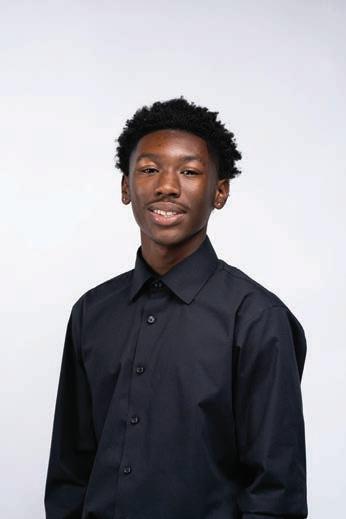


MA RYVILLE.E DU
Erica Williams lifts up students who face the odds she once did
By Melanie Johnson
the St. Louis American
Erica Williams has built her life around proving what’s possible.
Growing up in north St. Louis as one of 10 children, she faced hardship and loss — including the deaths of two siblings, one to gun violence. But education became her way forward, a tool she now uses to show her students that circumstance does not dictate destiny.
“My skin looks like them. My dialect — I sound like them as well. But I also foster a sense of hope,” she said.
Williams, now assistant school leader at Momentum Academy in Tower Grove, is being recognized for her deep commitment to children. She is one of five Excellence in Education honorees who will be celebrated at the Salute to Excellence in Education Gala, sponsored by the St. Louis American Foundation, on Nov. 1.

Her dream of becoming an educator began on the steps of her grandmother’s home in Walnut Park. At age 5, she fell in love with teaching while playing school with her cousins. It was there she also first played the role of an administrator, acting as the family’s school principal in their childhood game.
As the aspiring educator grew older, school became tougher than expected after her father pulled her out of Normandy High School. Her move to Gateway Christian High, a private school, proved to be an academic culture shock.
“I went from an A-B student to a C-D student at Gateway Christian,” Williams said. “So, I had no choice but to be engulfed in education. My dad promoted school, and my mom taught us survival.”
Williams’ determination paid off. Her fight to rise above failure led her to receive degrees from St. Louis Community College, Central Methodist University and the University of

Colleagues say what sets her apart is the attention and care she gives to children who have a troubled home life and struggle in school. Momentum Academy school leader Christian Jude said Williams inspires staff and students “to not let anything be a barrier but to use that as a launchpad to be successful.”
Williams was inspired to go into education by her son, who learned differently than other kids and was suspected by his kindergarten teacher of having a developmental delay. Her son had no learning disabilities, but Williams was motivated to better understand children who do. She began taking early education classes, advancing in her studies as her son advanced in his.
While Williams was a teacher at KIPP St. Louis, her then-school leader, Justin
Schulze, assigned her to a classroom of students with low grades and poor behavior. Looking back, Schulze said she transformed the class so quickly that it seemed like magic.
“She just brings a certain type of energy that makes kids want to pay attention to what she is saying and doing,” Schulze said. “Twenty years from now, those kids will look back and say, ‘Ms. Williams made me feel seen and heard.’”
At Momentum Academy, Executive Director Liz Valerio said Williams “walks with that aura” of seriousness about educating students. “I respect that so much,” Valerio said.
As Williams prepares to accept her Salute to Excellence award next month, she carries the memory of two loved ones who left too soon: a brother mur-
dered in Walnut Park in 2018 and a sister who died of AIDS when Williams was 19.
“My sister and brother will be cheering me on. My brother would say, ‘I knew it,’” she said.
Jude, who also grew up in north St. Louis, sees Williams’ recognition as proof of what’s possible. “It shows you don’t have to move away to make an impact,” he said. “We can still help St. Louis babies become awesome people and to do awesome things in this world.”
Williams hopes her students will carry that same lesson — that anything is possible — as her legacy.
“They just have to believe in themselves,” Williams said. “If I was able to obtain it, there is no doubt in my mind others can.”
By Nia Hightower
For The St. Louis American
For Errin Braddock and Mark Stallion, serving as co-chairmen of The St. Louis American Foundation’s 38th Salute to Excellence in Education Gala is far more than an honorary role. It’s a reflection of their shared belief in the transformative power of education and opportunity.
Both men, accomplished in their respective fields, share a deep commitment to empowering young people through learning, mentorship and access.
Braddock, chief diversity officer at Enterprise Mobility, said the recognition holds special meaning because it continues a family legacy — his mother, Antoinette Bailey, chaired the event in 1996.
“This role means so much to me,” he said. “We’re honoring people who are creating real opportunities for young people in St. Louis, and that aligns perfectly with Enterprise Mobility’s ROAD Forward initiative, where we invest in early childhood development, youth wellness and helping students prepare for college and careers.”
Enterprise’s initiative supports community organizations advancing social equity. For Braddock, that mission mirrors his own lifelong investment in education. He has served on numerous local boards, including the St. Louis Public Schools Foundation, Girls Inc. of St. Louis and Goodwill Industries.
“Mentors, friends and role models like Dr. Flint Fowler have shown me what it looks like to care fiercely about our kids and their future,” Braddock said. “So for me, this is more than a role. It’s a full-circle moment and a chance to help lift up the incredible honorees who are opening doors for the next generation right here in St. Louis.”
Braddock and Stallion worked with Fowler, this year’s Lifetime Achievement Award recipient, through the Boys & Girls Clubs of Greater St. Louis, where Fowler served as president for 28 years.
Stallion, a registered patent attorney at UB Greensfelder, said Fowler’s example epitomizes what the gala celebrates.
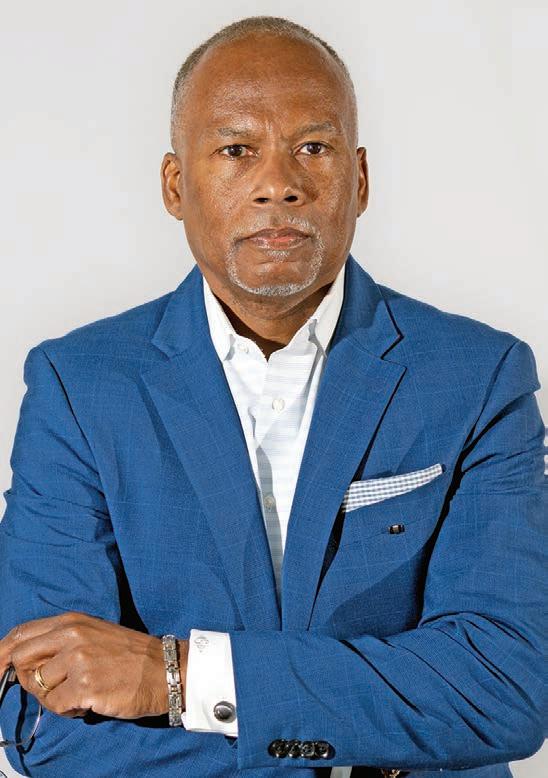

“He has certainly been a pillar in the community, particularly in the area of working with our youth,” Stallion said. “He is that unicorn in the room, where he has the ability to have such a reputation in the community that everyone loves him.”
A graduate of the Georgia Institute of Technology and Saint Louis University School of Law, Stallion has long used his professional platform to mentor students and entrepreneurs. He has championed innovation, education and entrepreneurship through his work with Arch Grants, Venture Café and the Boys & Girls Clubs
of Greater St. Louis. He also founded the HBCU Consortium, dedicated to supporting historically Black colleges and universities and their students.
“There were individuals in my life who took the time to pour into me when I was a young person,” he said. “That made a difference in my life. Since I graduated undergrad, I have always tried to reinvest in our youth because someone invested in me.”
Raven Whitener, director of The St. Louis American Foundation, said Braddock and Stallion embody the spirit
of the Salute to Excellence in Education Gala — celebrating those who open doors for others through mentorship, advocacy and investment in the next generation.
“Working with the co-chairs, it’s been really helpful to have them out there making sure that the community knows exactly what the foundation is doing,” Whitener said. “We’re incredibly grateful to have the support of Errin and Mark.” Their leadership as co-chairs honors their own achievements while amplifying a collective vision for a more inclusive and educated St. Louis, Whitener said.



SOUTHERN ILLINOIS UNIVERSITY
EDWARDSVILLE

Southern Illinois University Edwardsville is proud to support the St. Louis American Foundation’s Salute to Excellence in Education Scholarship and Awards Gala.
As a premier metropolitan university and leading producer of bachelor’s degrees in the St. Louis Metro area, SIUE provides a high-quality education that transforms lives, enables economic mobility, and powers the regional workforce.
At SIUE, we proudly join in saluting excellence and celebrating the remarkable achievements of this year’s honorees. Congratulations!




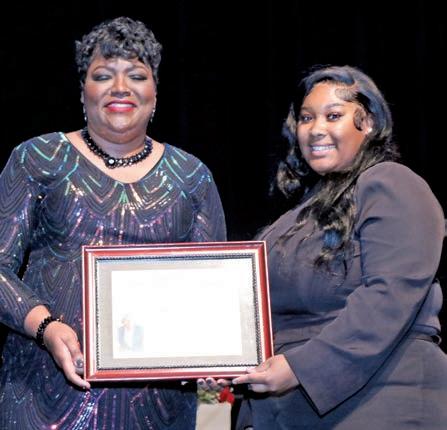
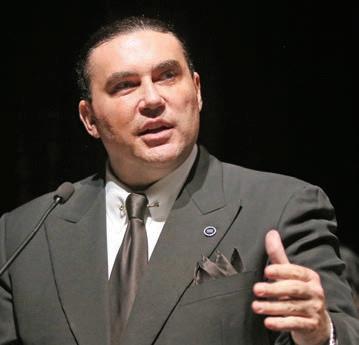
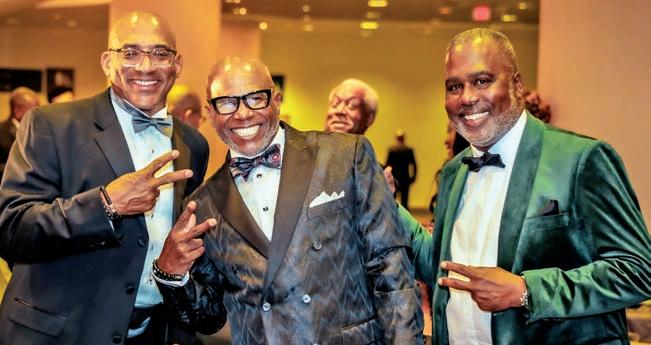

University
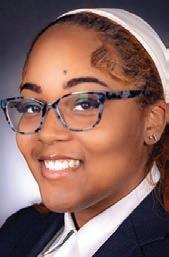
South Side Chicago native Jasmine Patricia Cole is a political science major with a minor in criminal justice and a pre-law concentration at Harris-Stowe State University. Salutatorian of CICS Ralph Ellison, she earned 85 college acceptances before choosing HarrisStowe for its sense of community. Cole serves as vice president of the campus NAACP, sophomore class senator, and assistant to the residential life coordinator. She plans a career in government law and politics, focusing on advocacy and justice for underrepresented communities.
Ja’Mell Frazier – Harris-Stowe State University
Detroit native Ja’Mell Frazier is a sociology major concentrating in law, justice and society at Harris-Stowe State University, where he maintains a 3.9 GPA as a Presidential Scholar.

Valedictorian of Loyola High School with a 4.2 GPA, he is active as secretary of the NAACP chapter, member of the
Collegiate 100, TRIO participant, and tutor in the Academic Resource Center. Frazier aspires to be a sociologist and civil-rights attorney and eventually serve in Congress to champion equity and opportunity.
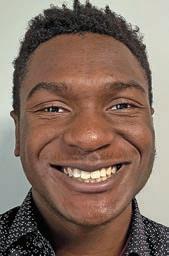
Hazelwood West High School graduate Lawrence Braithwaite earned a full ride to Maryville University, where he is majoring in game design. He first connected with Maryville through its summer coding camps and was drawn to its collaborative culture. Braithwaite focuses on interactive storytelling, user experience and prototyping, blending creativity and problem-solving to build immersive game worlds. He hopes to design original titles that inspire players and showcase diverse perspectives in gaming.
E’Sabel Merriweather – Maryville University
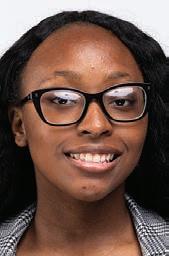
E’Sabel Merriweather, a graduate of the Collegiate School of Medicine and Bioscience in St. Louis, is majoring in computer science at Maryville University. Fascinated by problem-solving and innovation, she plans to pursue a career in machine-learning engineering.
Merriweather credits her family and friends for encouraging her academic journey and says she is excited to apply her skills to build technology that improves everyday life.
Natalie Smith – Maryville University
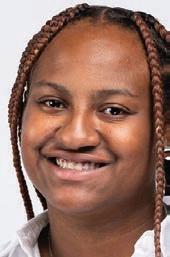
Natalie Smith, Class of 2029 at Maryville University, is majoring in interior design. Her creative interest began with decorating her own room and grew into a career goal to design inviting, functional spaces. A graduate of STL Artworks and two-year captain of her high-school shot-put team, she hopes to land an interior-design internship soon. Smith credits her family and mentor Dr. Oliver Tacto for encouraging her growth as an artist and student.
Preston Nance – Maryville University

Preston Nance is a first-year sports business management major at Maryville University and a sprinter on the Saints Track and Field team. He is drawn to the strategic and operational side of athletics and hopes to work for a professional sports organization. Nance also wants to mentor
youth in his community and encourage others to turn their passions into purposeful careers.
Shane Chronister – Southern Illinois University Edwardsville Psychology major Shane Chronister returned to college after years in the workforce to fulfill a personal goal. The Belleville East graduate spent his career in IT and contact-center management before deciding at 35 to complete his degree. He credits his partner’s support

for helping him balance school, work and life.
“Without a degree I’ve built a career, but this is about rounding myself out,” he says, encouraging others that it’s never too late to finish what you start.
Dane Farris – Southern Illinois University Edwardsville

Dane Farris, a senior computer science major, graduated from Granite City High School and earned an associate degree from Southwestern Illinois College. His interest in technology grew from early years without internet access. After a multi-year hiatus, he returned to college determined to graduate debt-free. Farris plans a career in software development and credits the Suggs Scholarship with helping him stay on track academically and financially.

Erin Stanley –Southern Illinois University Edwardsville
Erin Stanley, a senior majoring in applied communication studies with a minor in sociology, graduated from Belleville East High School and plans to earn her degree in spring 2026. Balancing full-time work and motherhood, she says
her son is her greatest motivation. “Every class I complete is not just for me — it’s for him,” she says. Stanley hopes to use her education to build a better future for them both.

Ibrahim Bedwan – Southern Illinois University Edwardsville Belleville East graduate Ibrahim Bedwan earned an associate degree from Southwestern Illinois College and now studies criminal justice while serving as a fulltime police officer in O’Fallon. He returned to school to deepen his understanding of the justice system and its impact on communities. Balancing rotating and night shifts with coursework, Bedwan hopes to use his degree to pursue leadership roles in law enforcement and contribute to safer, stronger communities.
Elexia James – St. Louis Community College

Elexia James is a freshman at St. Louis Community College pursuing a degree in baking and pastry arts. She believes food has a unique way of bringing people together and considers baking her creative language. James hopes to open a cozy, welcoming bakery where every dessert tells a story and builds community through the simple joy of shared food.

from Webster University. After 20 years in the technology field, he is pursuing a cybersecurity degree, a path he says was guided by faith after initially planning a career in respiratory care. Away from work, Yusef enjoys writing and pushing himself to grow and excel.
Kayla Williams – Saint Louis University
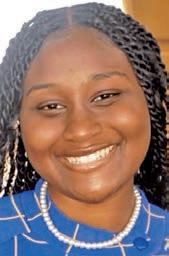
A Jennings Senior High School graduate, Kayla Williams is a psychology major aspiring to become a clinical psychologist. In high school she led the Neuroscience Club, served as Beta Club and Book Club treasurer, and earned repeated honors for academics and the arts. Williams gained research experience through internships at Washington University and UMSL and volunteered widely in the community. She hopes to open her own practice to expand mental-health support in underserved areas.
Aries Scruggs – Saint Louis University

Messiah Yusef – St. Louis Community College
Born in East St. Louis and raised in St. Louis, Messiah Yusef holds a bachelor’s degree in liberal studies from UMSL and a master’s in educational technology
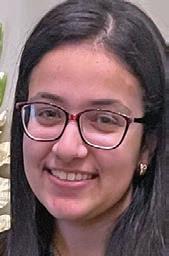
she also served in student council, debate, and Key Club. Hammad volunteered at her mosque and participated in UMSL’s Bridge Program, fueling her commitment to advocacy. She hopes to pursue law or social work to promote justice and equity.
Marlo Shivers – University of Missouri–St. Louis

Aries Scruggs, a St. Louis native and Saint Louis University High School graduate, majors in computer information systems with a focus on cybersecurity. A 2023 Intelligence Community Study Abroad Scholarship took him to Madrid to study European security. Once a 2.5 student, he now maintains a 3.6 GPA while leading through the African American Male Scholars program, Black Student Alliance, and SOAR. A former Kappa League treasurer and ByteWorks volunteer, he combines leadership, service, and a passion for technology.
Kauthar Hammad – University of Missouri–St. Louis
Hazelwood West High School graduate
Kauthar Hammad is a UMSL Honors College criminology and criminal-justice major. Founder of her school’s book club and a National Honor Society member,

St. Louis native Marlo Shivers, a Ritenour High School graduate, brings creativity and purpose to engineering. Participation in orchestra and the College and Career Ambassadors Program balanced his technical drive with community engagement. A high-school engineering course sparked his passion for design and innovation, leading him into robotics. Now majoring in civil engineering, Shivers hopes to build structures that improve neighborhoods and everyday life.
Taylor Moore – University of Missouri–St. Louis
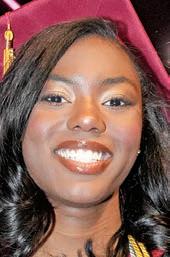
Taylor Moore, a Lutheran North High School graduate, distinguished herself through the National Honor Society, student government, and the UMSL Bridge Program. She also represented her school at citywide investment events and led several student organizations. Moore’s mix of leadership and scholarship reflects her dedication to community engagement. She plans a career in international business as a consultant, aiming to help shape global partnerships.
Anira (Rein) Clark – Washington University in St. Louis Roosevelt High School graduate Anira (Rein) Clark excelled in speech and debate while competing in wrestling, track, and volleyball. Known for balancing academics with family responsibilities, she now studies psychology and social work at Washington University. Clark hopes to guide children and teens in finding purpose and confidence through counseling and community service.
Tamiah Woodfork – Washington University in St. Louis

Tamiah Woodfork, a Hazelwood Central High School graduate, was first-chair trumpet in the symphonic band and brass-section leader in marching band. A National Honor Society member and junior-class officer, she blended leadership and artistry throughout high school. At WashU, she is pursuing a degree in biology with an English minor, combining her love of science and the humanities.

Anisa Dzananovic – Webster University Born and raised in St. Louis, Anisa Dzananovic is a first-generation college student pursuing a business administration degree with an emphasis on accounting and finance at Webster University. A Mehlville High School graduate, she interned with Arsenal Credit Union, where her professionalism impressed managers and sparked her interest in finance. Dzananovic plans to earn an MBA and use her career to open doors for others in her community.
Jack Dawson – Webster University

Jack Dawson, a Seckman Senior High School graduate from Imperial, Missouri, is studying business administration with an emphasis in marketing at Webster University. A former DECA vice president and state competitor, he blends creative strategy with leadership. Dawson also competed in varsity volleyball and track and field, experiences that taught teamwork and perseverance. Growing up Korean in a diverse community inspired him to use art and media to promote cultural understanding.
Reyla Audriana Green – Webster University

Originally from Louisville, Mississippi, Reyla Audriana Green is majoring in legal studies at Webster University with plans to become a law librarian. A Parkway Central High School graduate, she maintained a 3.7 GPA and was a delegate at the Congress of Future Medical Leaders. Green was active in theater, earned National Honor Society induction, and received multiple academic awards. A former Miss Alabama Sweetheart, she also completed the ARIYA Rites of Passage program sponsored by Delta Sigma Theta Sorority.
Ava Monaco – Webster University

Graduating high school a semester early with a 4.0 GPA, Ava Monaco earned both a Student Choice Award and an A+ Scholarship. Now a sound recording and engineering major at Webster University, she is active in the Audio Engineering Society and The Journal, the campus newspaper.
A songwriter and guitarist, she hopes to one day launch a female-run record production company that provides safe and empowering creative spaces for women in the music industry.
Elias Tannous – Webster University

Independent filmmaker Elias Tannous studies film and television production at Webster University. Raised in a Palestinian American household, they focus on telling underrepresented stories that challenge stereotypes and amplify marginalized voices. As a director and cinematographer, Tannous has created several short films and documentaries. With support from the scholarship, they are beginning production on a debut feature exploring identity, empathy, and connection.
Harmony Hudson – Spelman College

A St. Louis native, Harmony Hudson is an economics major at Spelman College with minors in management and entrepreneurship. On campus, she serves as treasurer of BLISS and participates in the Spelman Entrepreneurship Club, Future Business Leaders of Spelman, and the National Council of Negro Women. Her long-term goal is to work in asset management and use financial education to uplift historically excluded communities. Hudson hopes to eventually launch a business focused on economic justice, offering professional development, college prep, and financial literacy programs.
Jeremiah Pinex – Bowie State University
Ladue Horton Watkins High School graduate Jeremiah Pinex is pursuing visual

communications and digital media arts at Bowie State University in Maryland. A former All-State track and field athlete, he combines artistic and athletic discipline in his pursuit of ethical, creative fashion design. Pinex aspires to build a brand that blends integrity, innovation, and style while celebrating cultural expression. Guided by Proverbs 25:28 — “A man without self-control is like a city broken into and left without walls” — he strives to live and create with purpose.
Korriana Williams – Aspiring Dentist
Korriana Williams has always loved science, a passion that fuels her goal of becoming a dentist. She plans to begin with a degree in dental hygiene before continuing her education to earn a doctorate in dentistry. Outside the classroom, Williams enjoys reading, playing basketball, and watching movies — activities
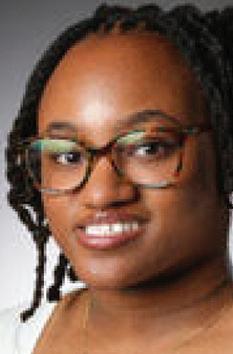

that help her stay motivated and balanced. Grateful for the support of the scholarship, she says it provides the opportunity to keep moving toward her academic and professional dreams.
Mekhi Brown – Project Management
Major Mekhi Terrance
Michael Brown is pursuing a degree in project management with a vision of becoming a respected leader in his field.
Combining tech-
nical skill with creativity, Brown draws on his love of film and photography to enhance his perspective and problem-solving approach. He hopes to guide
and mentor those who follow him into the profession and credits the St. Louis American Foundation with helping make his future “all the more secure and clear.”
Precious Barry – Washington University in St. Louis

At just 20 years old, Precious Barry has emerged as a powerful youth activist and public speaker dedicated to empowering marginalized voices. A Riverview Gardens High School graduate and sophomore at Washington University, she founded the university’s first NAACP chapter. A member of Delta Sigma Theta Sorority, Inc., Barry began civic engagement at 14 by interviewing local politicians. She continues to champion youth inclusion in decision-making and uses her platform to inspire peers to challenge injustice through grassroots activism.




We invest in promising students from under-resourced communities, opening doors to education and brighter futures. In partnership with The St. Louis American, we amplify voices, tell untold stories, and inspire hope through independent, impactful journalism.
The Foundation and its university partners have awarded more than $2.4 million in scholarships this year — part of an ongoing commitment that has nurtured and supported more than $19 million in scholarships for exceptional students since the program began.
St. Louis American Foundation Scholarship: $50,000
Harris-Stowe State University: $69,104
Webster University: $629,000
St. Louis Community College: $20,000
Southern Illinois University Edwardsville: $128,000 Maryville University: $572,000 Goldfarb School of Nursing: $25,000 Washington University: $680,000
University of Missouri–St. Louis: $214,032
Saint Louis University: $20,000
Total: $2,407,136

Continued from page11
ideas of building a better future for our youth,” Cooksey said, adding: “If you look beyond the surface, so much of what is good about education in our region can be attributed to Maxine and Bob’s time and treasure.”
The 2014 fatal police shooting of 18-year-old Michael Brown in Ferguson affected the couple deeply, prompting them to address criminal justice. In 2016, they launched the Mass Incarceration Community Education Initiative, which has engaged more than 7,000 regional and statewide leaders to advance criminal justice reform.
Retired St. Louis Commissioner of Corrections Doug Burris credits Clark and Fox with “expanding and strengthen-
ing educational opportunities” that have helped the region prosper. “They are passionate about education being the great equalizer in society and should be made available to all people,” Burris said.
Clark recalled how conversations with young people during her visits to protest sites in Ferguson influenced her to support summer camps and programs that inspire disadvantaged youth and guide them toward careers.
“I wanted that for all children because so many have basic skills but don’t know how to channel their energy,” she said. “Imagine if they were directed to a program that was music or dance. … They would have a positive use of their talents.”
Building on this work, Clark in 2021 launched Delmar DivINe, a social enterprise zone for social service agencies. Its 35 tenants include nonprofit, capacity-building, social innovation institutions.
These organizations serve children and families in the St. Louis region across health, education, food service and finance sectors.
The couple was clear on what those with more and those with less should understand about each other.
“The less fortunate need to know there are people who care about them, and they need to reach out and share their stories,” Clark said. “We need to know … that they can add to our society and our communities. With the right inspiration and respect and humanity, we can change the world. America would be much greater if all people were considered capable.”
Asked if current challenges discourage them, Clark responded, “No, it makes me work harder because I can control what I do, not others. It inspired me to do more work with Delmar DivINe … to have more impact in the community.”
Fox added: “You can’t get discouraged
when things aren’t working perfectly. If we were shy people, we wouldn’t be doing this. But we were raised in homes where doing nothing just wasn’t acceptable.”
What do they want their legacies to be?
“It would be that (we helped) make St. Louis a better place for the future, … inclusive of all people,” Fox said. “I want to have contributed to that.”
“For me,” Clark added, “I wanted to make a difference. Even though I’m a 4-foot-9 person, you can think big and dream big and accomplish big goals. If you think about the greater good, not just the little good you can do. … It’ll never be perfect, but it certainly can be better. And that’s what I work toward every single day.”
Sylvester Brown Jr. is the Deaconess Foundation Community Advocacy Fellow.


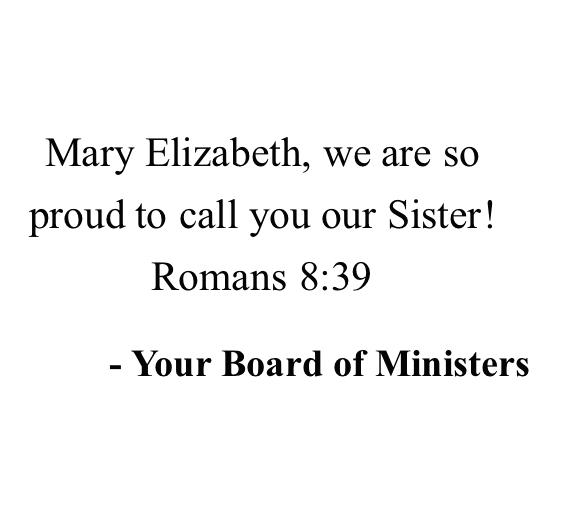






Proud to support the St. Louis American Foundation and our friend Dr. Flint Fowler. The 38th Annual Salute to Excellence in Education G ala celebrates educational excellence and honors a lifetime spent creating meaningful opp ortunities for St. Louis children.
Congratulations to Dr. Fowler and all this year’s awardees!

The St. Louis American Foundation is fortunate to have an opportunity to collaborate with generous individuals and organizations in the region who share our view that education is a critical priority for African Americans to provide more opportunites for them to elevate themselves. That results in their contributing to more community progress and the well being for all.
The St. Louis American Foundation and its donors and collaborative partners have awarded over $19 million in scholarships, education and community grants since its inception in 1994.
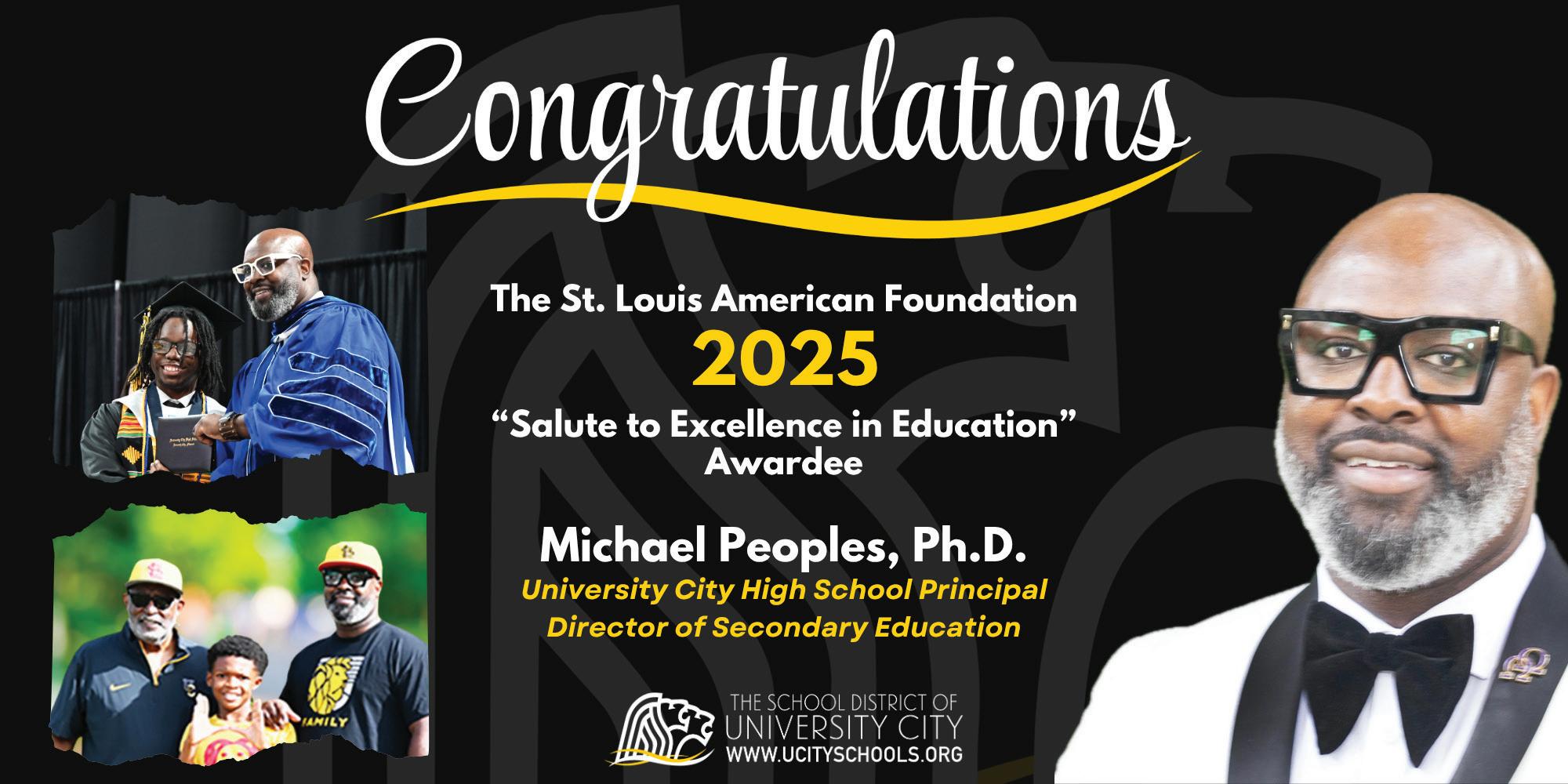
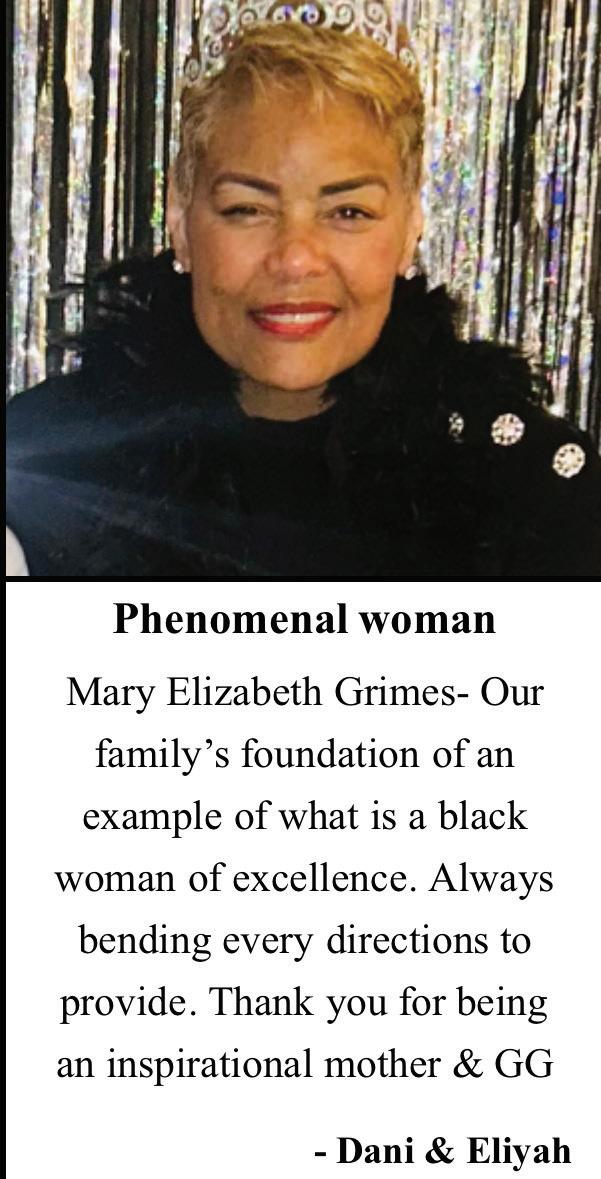





Salute Class of 2024
Asquith S. “Sean” Armstrong
Dr. Latricia Singleton-Clark
Dr. Mary Hairston
Lieutenant Colonel Nina McLean
Salute Class of 2023
John Carlos Armstead, Sr
Dr. Shawn A. Baker
Brian C. Griffin
Brandon Haynes, PH.D
Christopher C. Miller
Briana Morales
Charles Murphy
Kendra Vaughn
Salute Class of 2022
John Carlos Armstead, Sr.
Dr. Shawn A. Baker
Brian C. Griffin
Brandon Haynes, Ph.D.
Christopher C. Miller
Briana Morales
Charles Murphy
Kendra Vaughn
Salute Class of 2021
Howard E. Fields III, Ph.D.
Brian M. Gant
Lynn R. Hinton
Jonathan Strong
Ronda Wallace
Salute Class of 2020
LaShanda R. Boone
Shantana Goodwin-Payne
Karen I. Hall, Ed.D
Romona Miller
Sheryl Denise Rogers
Rhonda Stovall
John E. Thomas
Craig A. Waddell, Ph.D
Salute Class of 2019
Petra Baker
Monica D. Diggs, Ed.D
Victoria A. Harris
Kimberly Patrice Long
Duane McGowan
Tina Clark-Scott
Lawerence Shields
Tanesia L. Simmons
Salute Class of 2018
Dr. Chauncey Granger
Kim I. Haywood
Bernard Long Jr.
Dorthea B. Nevils. ED.S.
Raymond K. Robinson, M.DIV
Dr. Leslie Thomas Washington
Dr. Tamara D. Wells
Rhea M. Wells
Salute Class of 2017
Alan Byrd, Jr.
Anya Gray Franklin
Dr. Crystal Gale
Shanise N. Johnson
Angela Keys
Dr. Kevin M. Martin
Dr. Raghib Muhammad
Dr. LaTisha A. Smith
Salute Class of 2016
Kimberly D. Berry
Dr. Sarah Briscoe
Cori Cloyd
Kathleen Foster
Dr. Stacy Hollins
Dr. Kacy Seals
Dr. Gladys Smith
Cynthia D. Warren, Ph.D., Ed.D.
Salute Class of 2015
Russell Arms
Dr. Erica L. Bumpers
Dr. Ingrid Clark Jackson
Alicia G. Davis
Veronica Hildreth
Dr. Ashley R. McGhaw
Bessie Bennett Peabody
Dr. Tiffany L. Taylor-Johnson
Salute Class of 2014
Wesley J.C. Bell
Nicole Binion
Nina D. Caldwell, Ed.D.
Edward M. Johnson, Ed.D.
James Paine, II, Ph.D.
Germaine Stewart
Jim Triplett
Martha Warren
Salute Class of 2013
Clara Collins Coleman
Tiffamy C.E. Fane, M.A.
Vanessa Howard, Ed.S.
Wanda P. LeFlore, Ed.D.
Nathalie Means Henderson, Ed.S.
Wilma L. Slaughter, MS
Jody J. Squires, Ph.D.
Deitre J. Terrell
Salute Class of 2012
Jason Brown
Earnestine Carr
LaChrisa Crenshaw
Duane M. Foster
Andrea N. Hayes
Jaqueline Storman Turnage
Doretta A. Walker
LaRhonda L. Wilson
Salute Class of 2011
Carolyn Blair
Nikki Doughty
Latasha M. McClelland
Michelle L. McClure
Art J. McCoy, II
Marsha Yvonne Merry
Natissia Small
Darnell P. Young
Salute Class of 2010
Dr. Celeste A. Adams
Michael Blackshear
Sheandra P. Brown
Florida M. Cowley
Bruce Green
Carole Johnson
Matthew McCallum
Sybil Selfe
Salute Class of 2009
Kelly Ballard
H. Eric Clark
Niyi Coker, Jr.
Natasha Mosley
Rona Roginson-Hill
Michelle A. Pendleton
Dr. Alice F. Roach
Margaret Williams
Salute Class of 2008
Julia Robinson Burke
Mama Lisa Gage
Terry J. Houston, Sr.
Eric D. Johnson, Sr.
RaShawn Johnson
Marilyn Mims
Darlene Morgan
Simone Williams
Salute Class of 2007
Luella Atkins
Haliday Douglas
Sonja P. Little
Romona Miller
Tyrone Jeffrey
Darlene Norfleet
Victor Poindexter
Brian Rogers
Salute Class of 2006
Jowanda Bozeman
Dr. Harvey Fields, Jr.
Kathryn Garrett
Clarice Hall
Crystal Herron
Howard Rambsy
Kathy Walker Steele
Zella Williams
Salute Class of 2005
Charles Ransom
Betty Robinson
Gwendolyn Shannon
Makeda Reid-Vales
Shirley Washington-Cobb
Chelsea Watson
Brian Weaver
Dr. Brenda Youngblood
Salute Class of 2004
Travis Brown, Sr.
Patrick Jackson
Pat Johnson
Vernon Mitchell
Terri Moore
Joan Barnes-Parham
Monette Gooch-Smith
Dr. Ann Chism-Williams
Salute Class of 2003
Vera Atkinson
Dr. Stephanie Carter
Rose Coleman
Dr. Vern Moore
Juanester Russell
Frank Smith
Dr. Linda Lou Smith
Dr. Gwen Turner
Salute Class of 2002
Cynthia Boone
Thomas Edwards
Terrance Freeman
Flossie Henderson
Billie Mayo
Edna Pipes
Salute Class of 2001
Dr. Edwin F. Bailey, Jr.
Terrence Curry
Juliette Hite
Dr. Larona Morris
Annie House Russell
Hattie K. Weaver
Salute Class of 2000
Prof. Bennie A. Adams
Ian P. Buchanan
Mabel Thomas Edmonds
Michael T. Railey, M.D.
Linda Riekes
Cynthia J. Sutton
Salute Class of 1999
Michael R. DeBaun, M.D.
Roland Nichols
Eugene B. Redmond
Althea Taylor
Kerry M. Woodberry, M.D.
Salute Class of 1998
Alexander Harris, O.D.
Louis M. Marion
Dr. Patricia Nichols
Dr. Savannah Miller-Young
Louis Zitzmann
Salute Class of 1997
Alice M. Aldridge
Marion Bosley-Evans
Cynthia L. Cosby
Ivory Johnson
Andrea Walker
Salute Class of 1996
Carol Barnes
Nino Fennoy
Dr. Charlene Jones
Bettye Reed
Chanuncey Trawick
Salute Class of 1995
Victoria Cothran
Dr. Charles Harris
Dr. Ernest Jones
Michelle Lowery
Viola Murphy
Salute Class of 1994
Dean James McCleod
Dr. Arvarh Stickland
Rudolph Wilson
Barbara Woods
Dr. Edith Mae Young.
Note: The specific category of “Excellence in Education” Awards commenced in 1994.
Past Merit Awardees:
Salute Class of 1993
Dr. Edna Allen
Dr. Frances J. Gooden
Elizabeth Hutcherson
Addie Bryan Jackson
Fontroy Todd
Salute Class of 1992
Dr. Harvest Collier
Dr. Lincoln I. Diuguid
Alicia Ivory-House
Sandra Murdock
Dr. Wilfred Sorrell
Salute Class of 1991
Dr. Nettie S. Armmer
Leon Burke, Jr.
Dr. Queen Fowler
Yvonne Howze
Louise Mitchell
Bessie L. Reid
Beatrice Strong
Betty Porter Walls
Louise T. Wilkerson
Salute Class of 1990
Lt. Col. Leroy Adkins
Stephen Banks
Marguerite Ross-Barnett
Lynn Beckwith, Jr.
Evail Boyd
Jerry L. Bryant
Lois Harris
Edward Hightower
Kermit Hill
Floyd Irons
Rev. Dr. Buck Jones
Jerome B. Jones
Betty Jean Kerr
Shirley LeFlore
Kathryn Nelson
Hershel J. Walker
Rochelle Walker
Wilma Wells
Edna J. Whitfield
Gaye S. Wilson
Dorrie K. Wise
Salute Class of 1989
Sarah Short-Austin
Ron Carter
Rose Davis
Mathew Foggy
Rev. C. Garnett Henning, Sr. Hulas King
Andre Jackson
Oval Miller
Eugene Redmond
Ollie Steward
Eric Vickers
Salute Class of 1988
George Elliott
Jonathan Ford
Dr. George Hyram
Carolyn Kingcade
Richard Martin
Judge Theodore McMillan
Jamie Rivers
Irene F. Schell
Norman Seay
Willie Mae Ford-Smith
H. Phillip Venable, M.D.
Dannette Connor-Ward
Bill Wilkerson




2024
Jackie Joyner-Kersee (Lifetime Achiever)
Ellicia Lanier (Stellar Performer)
2023
Dr. James T. Minor (Stellar Performer)
Dr. Joycelyn Pugh-Walker (Stellar Performer)
2022
Holly Cousins (Lifetime Achiever)
Dr. Latonia Collins Smith (Stellar Performer)
2021
Arthur R. Culver (Lifetime Achiever)
Gwendolyn Diggs (Stellar Performer)
2020
Doris A. Graham, Ph.D (Lifetime Achiever)
Sharonica L. Hardin-Bartley, Ph.D (Stellar Performer)
2019
Charles and Shirley Brown (Lifetime Achievers)
Valerie Bell (Stellar Performer)
2018
Johnetta R. Haley (Lifetime Achiever)
Michael P. McMillan (Stellar Performer)
2017
Michael A. Middleton (Lifetime Achiever)
Dr. Kelvin Adams (Stellar Performer)
2016
Dr. Charlene Lofton Jones (Lifetime Achiever)
Deborah Patterson (Education Advocate)
2015
Alice Faye Roach, Ed.D. (Lifetime Achiever)
Tiffany Anderson (Stellar Performer)

2014
Katie Harper Wright, Ed.D. (Lifetime Achiever)
Terrence L. Freeman, Ph.D. (Stellar Performer)
2013
Lynn Beckwith, Jr., Ed.D. (Lifetime Achiever)
Art J. McCoy, Ph.D. (Stellar Performer)
2012
Gerald Early (Lifetime Achiever)
Judge Jimmie Edwards (Stellar Performer)
2011
Joyce M. Roberts (Lifetime Achiever)
Anthony ‘Tony’ Thompson (Stellar Performer)
2010
2010
Dr. Zelema Harris (Lifetime Achiever)
Dr. Stanton Lawrence (Stellar Performer)
2009
Eugene B. Redmond (Lifetime Achiever)
Diane Miller (Stellar Performer)
2008
James E. McLeod, Ph.D. (Lifetime Achiever)
Donna Patton (Stellar Performer)
2007
Dr. Henry Shannon (Lifetime Achiever)
Don Danforth III (Stellar Performe
2006
Dr. John Wright (Lifetime Achiever)
Dr. Cheryle Dyle-Palmer (Stellar Performer)
2005
Dr. Queen Fowler (Lifetime Achiever)
Darlynn Bosley (Stellar Performer)
2004
Dr. Henry Givens (Lifetime Achiever)
Joyce Roberts (Stellar Performer)
2003
Martin Mathews (Lifetime Achiever)
Audrey Ferguson (Stellar Performer)
2002
Dr. George H. Hyram (Lifetime Achiever)
Vickie & Howard Denson (Stellar Performers)
2001
John E. Jacob (Lifetime Achiever)
Victoria Nelson (Stellar Performer)
2000
Rev. William G. Gillespie (Lifetime Achiever) Carolyn D. Seward (Stellar Performer)
1999
Dr. James M. Whittico (Lifetime Achiever) Gloria L. Taylor (Stellar Performer)
1998
Gloria Waters -White (Lifetime Achiever)
Steven N. Cousins (Stellar Performer)
1997
Judge Theodore McMillan (Lifetime Achiever)
Gwendolyn Packnett (Stellar Performer)
1996
Dr. Helen Nash (Lifetime Achiever) Fr. Maurice Nutt (Stellar Performer)
1995
Kathryn E. Nelson (Lifetime Achiever)
Khatib Waheed (Stellar Performer)
1994
Bob Shannon (Lifetime Achiever) Dr. Doris Wilson (Stellar Performer)
1993
Al Johnson (Lifetime Achiever)
Carol E. Jackson (Stellar Performer)
1992
Frankie M. Freeman (Lifetime Achiever) Drs. Victor & Vincent Rodgers (Stellar Performers)
1991
Jesse Hill (Lifetime Achiever)
Dr. John H. Gladney (Stellar Performer)
1990
Fred H. Black (Gold Medallion Awardee)
1989
Bertha Gilkey (Gold Medallion Awardee)
1988
Vincent E. Reed (Gold Medallion Awardee)








